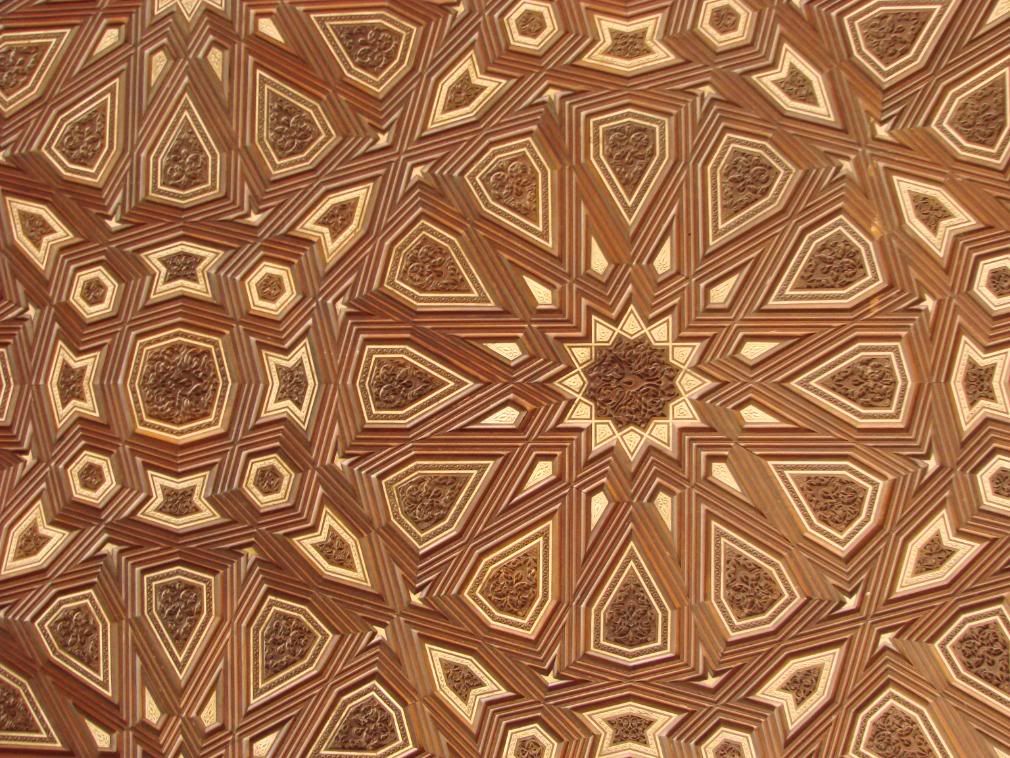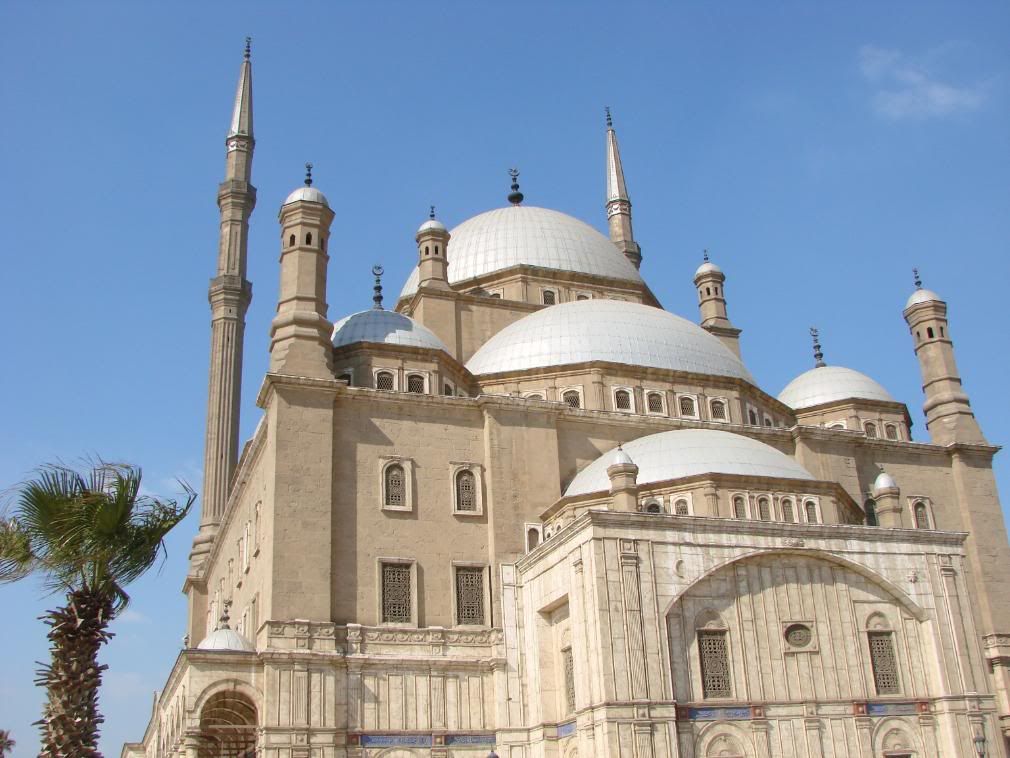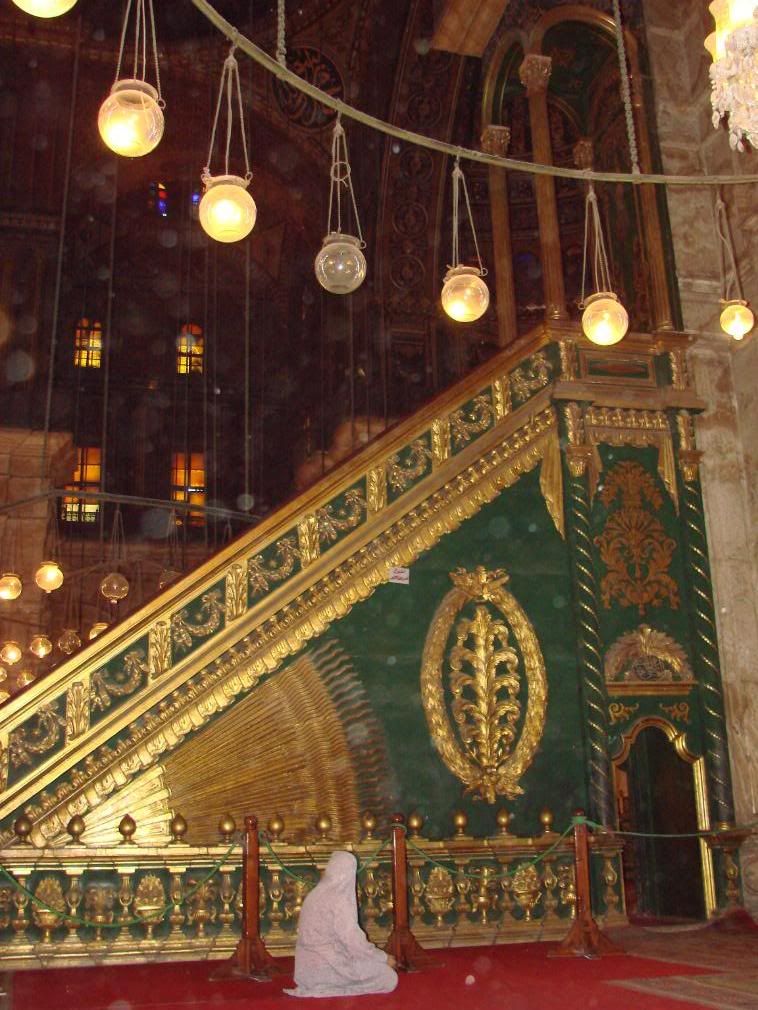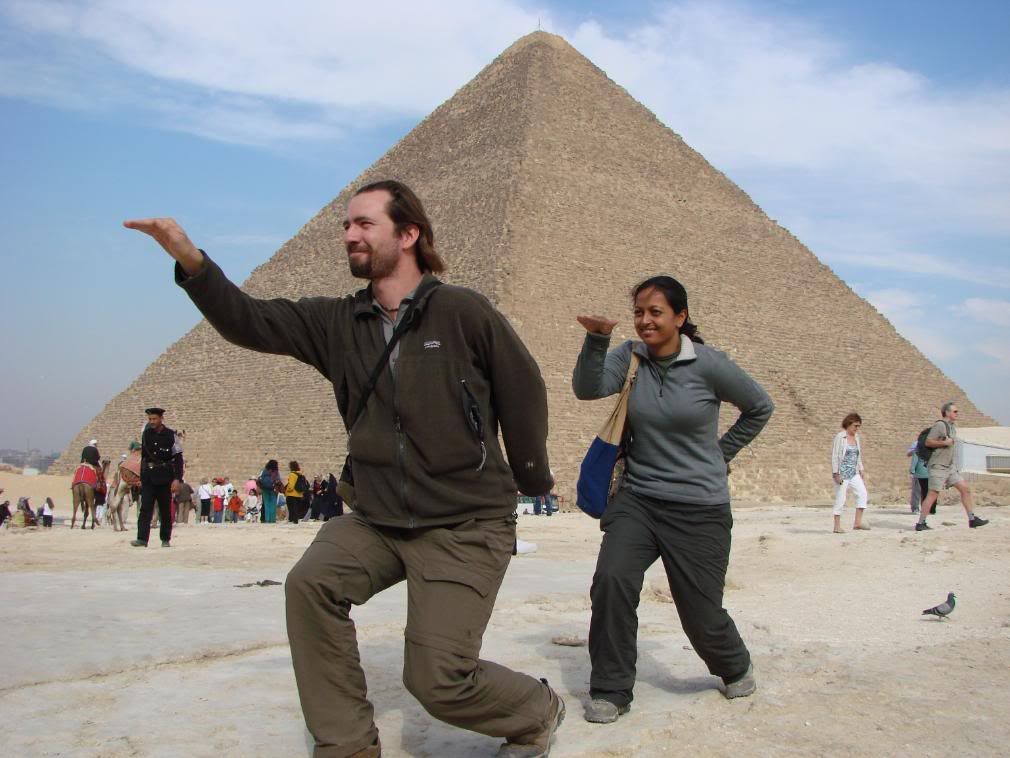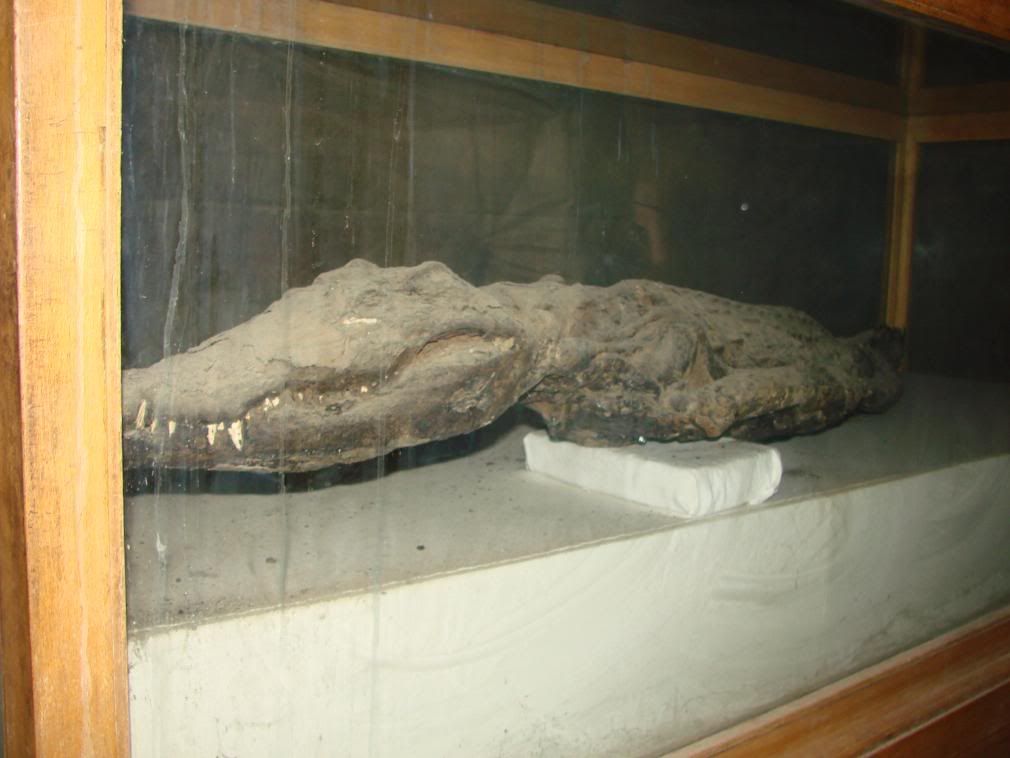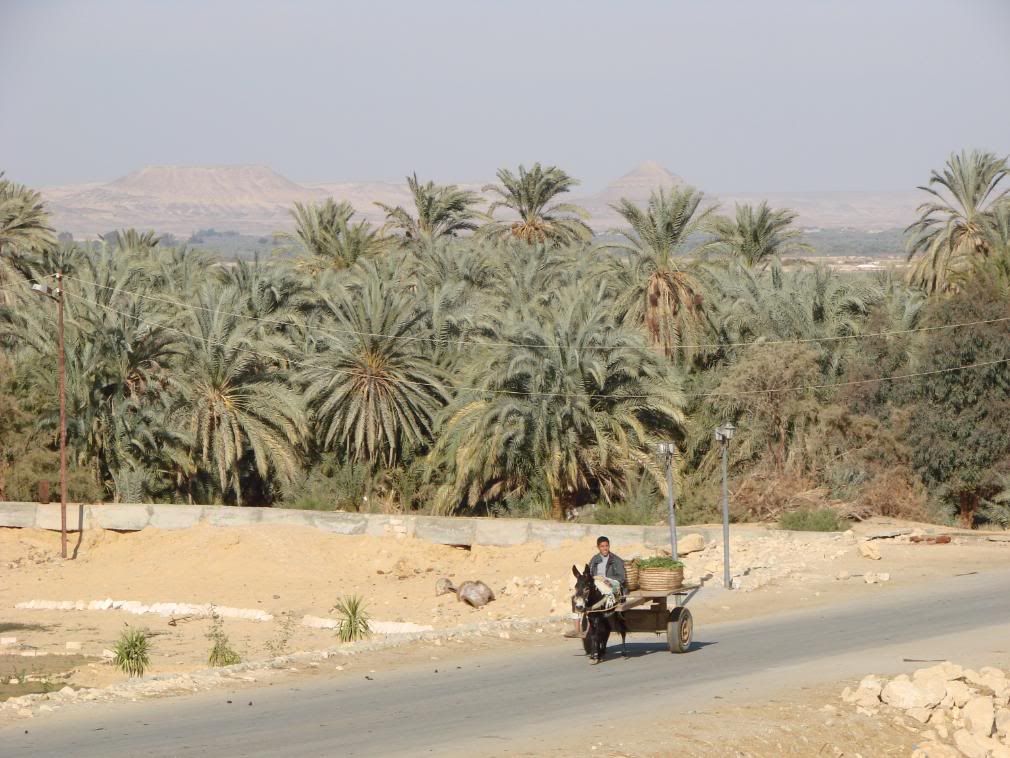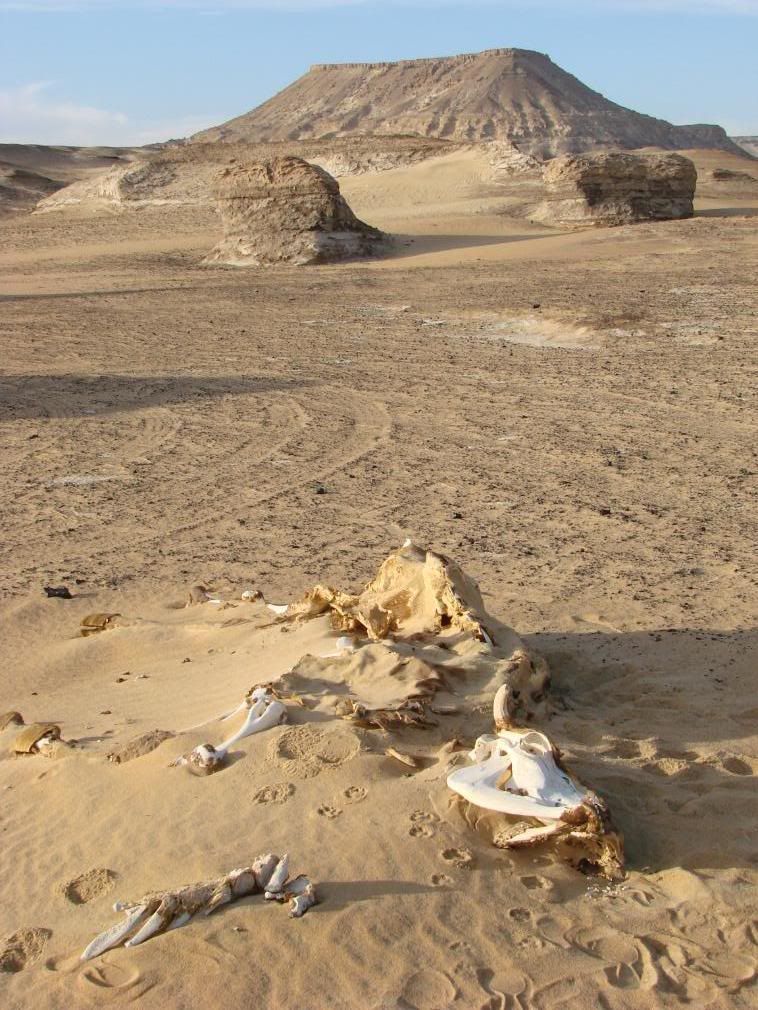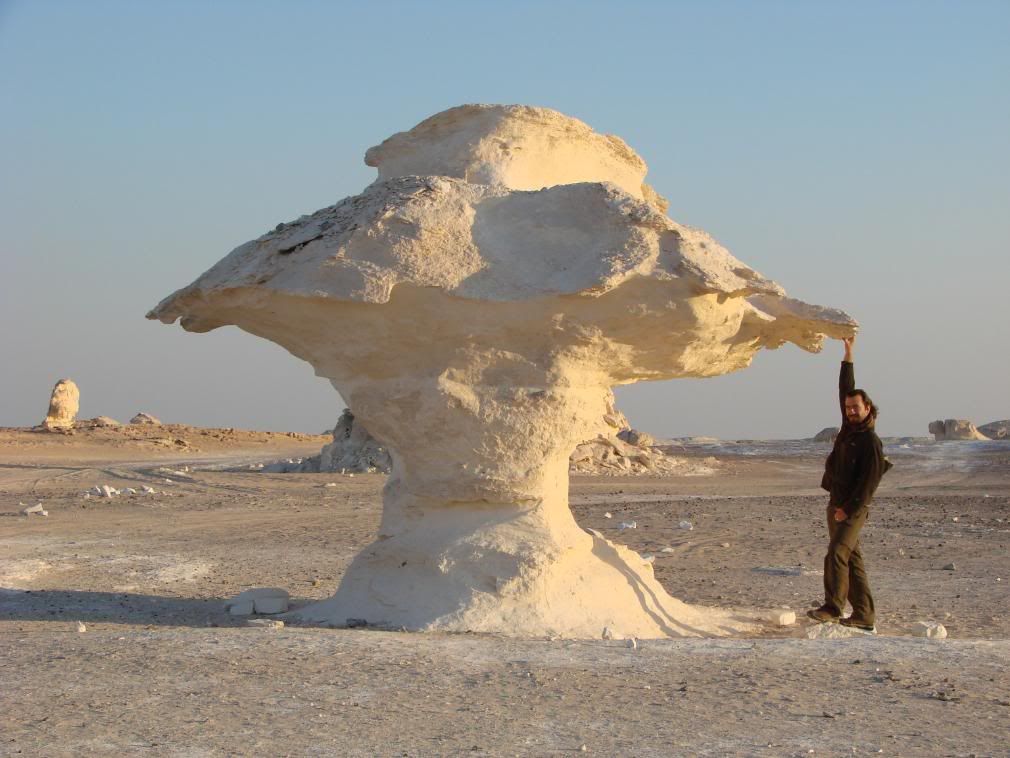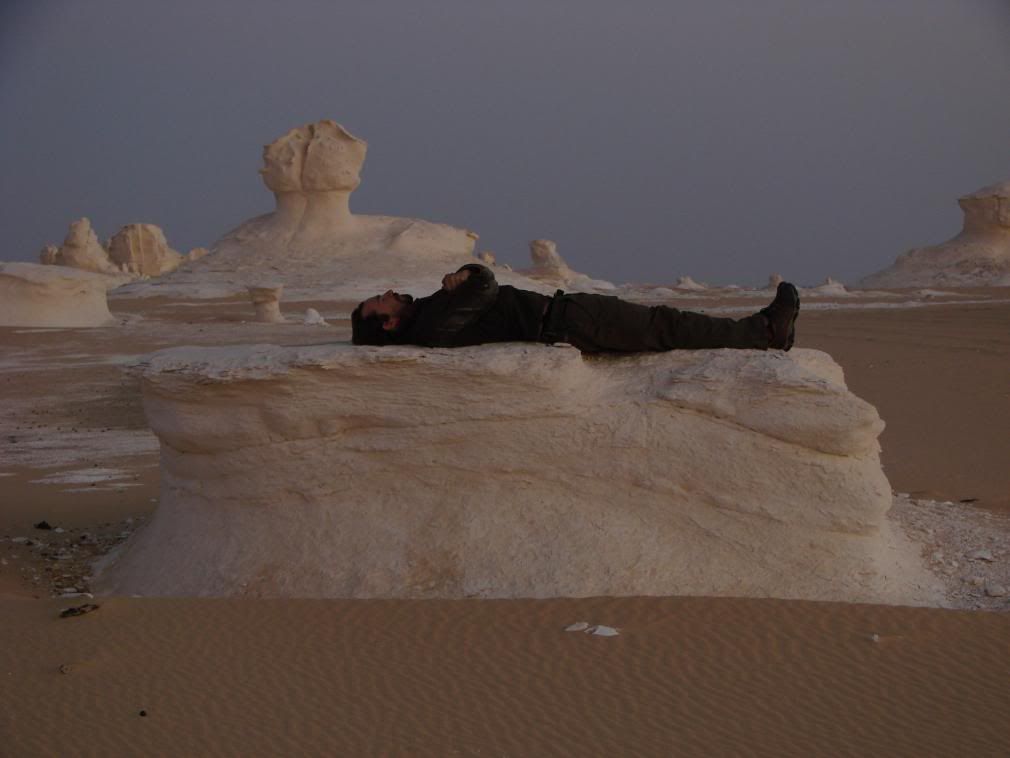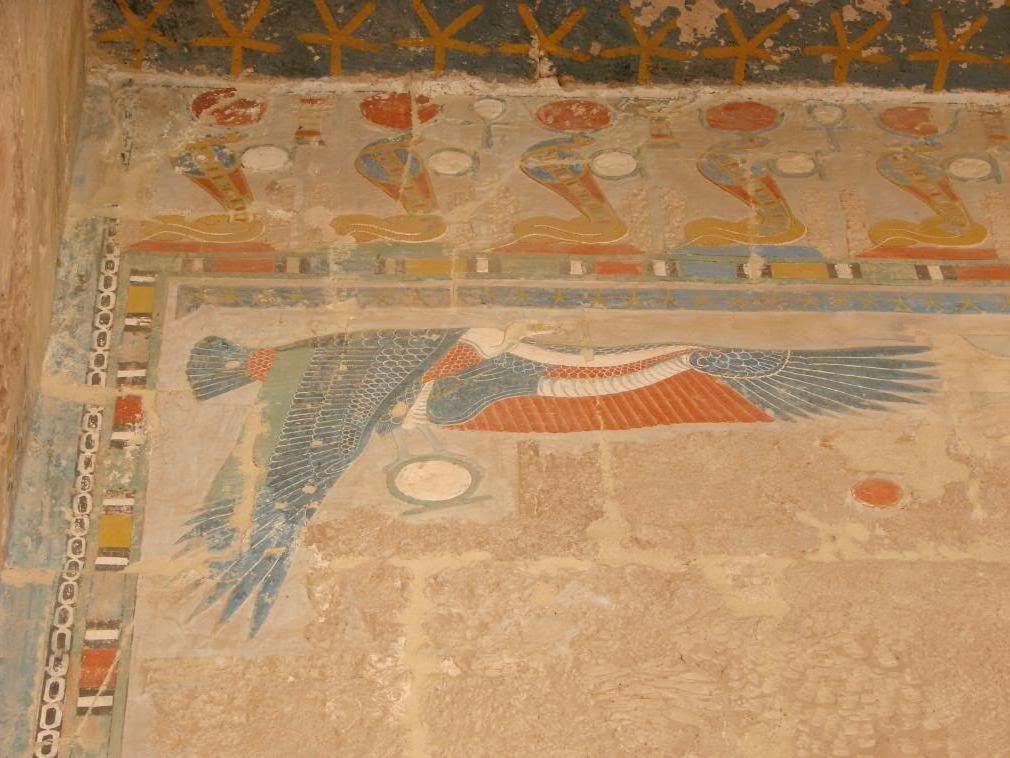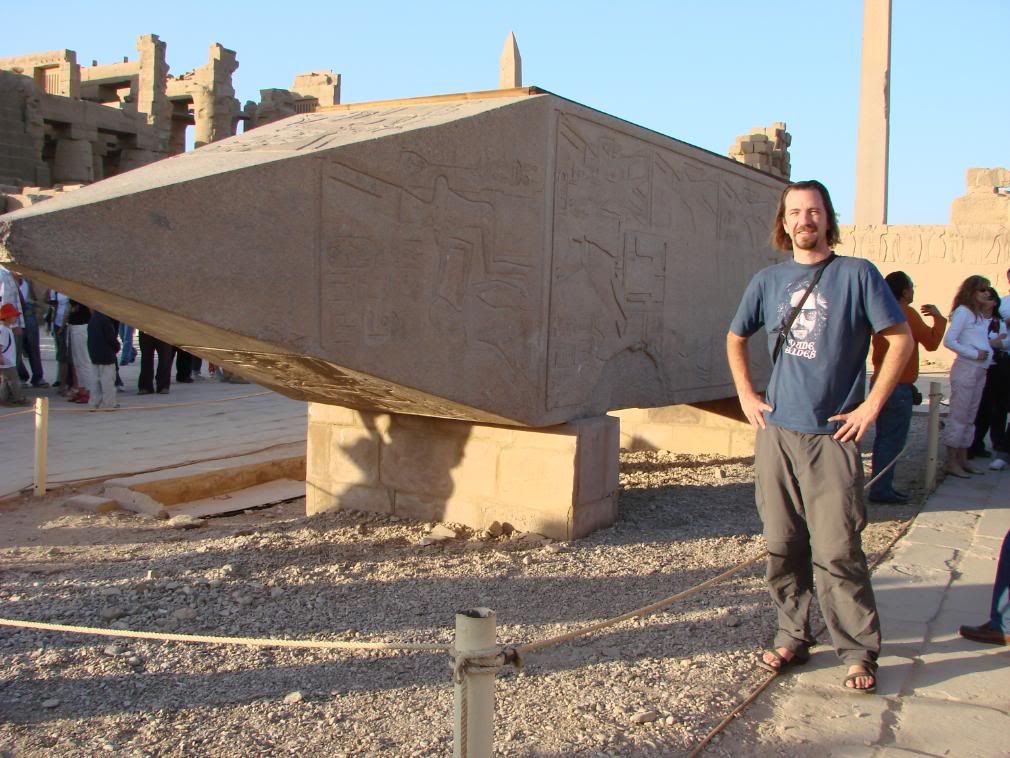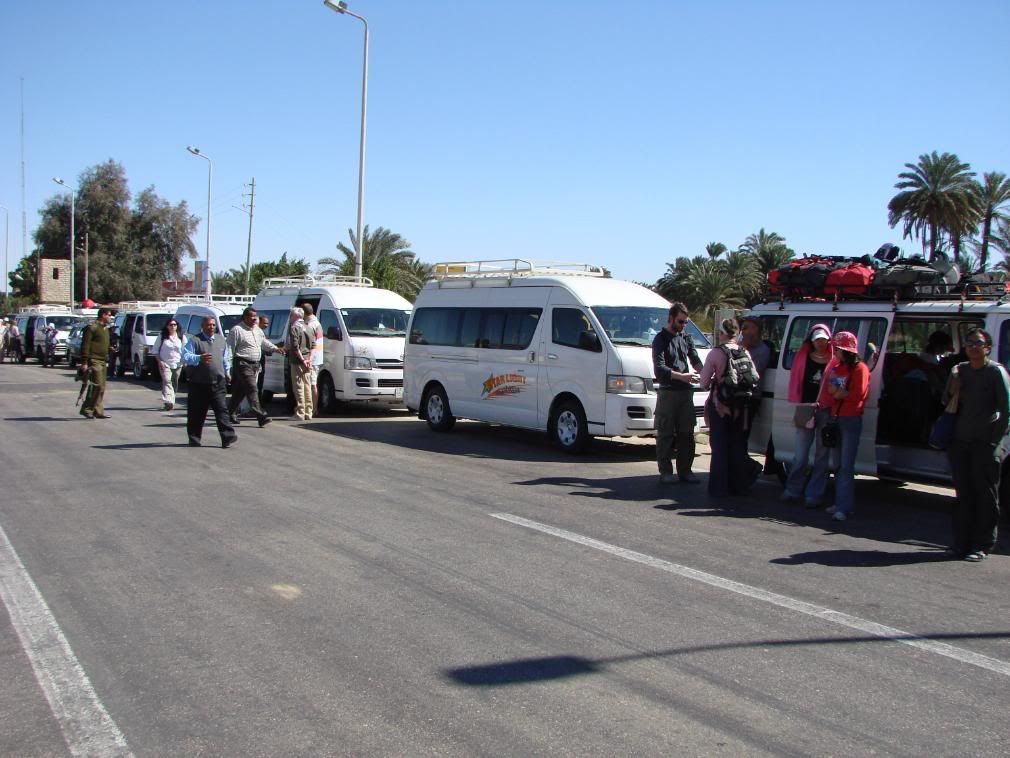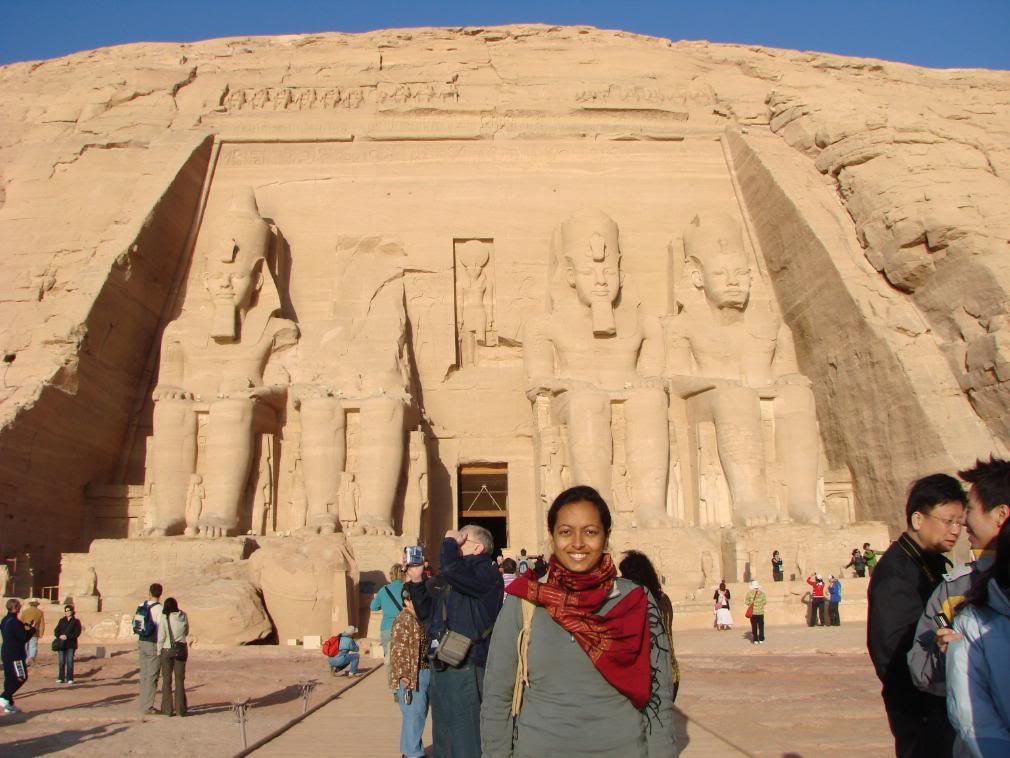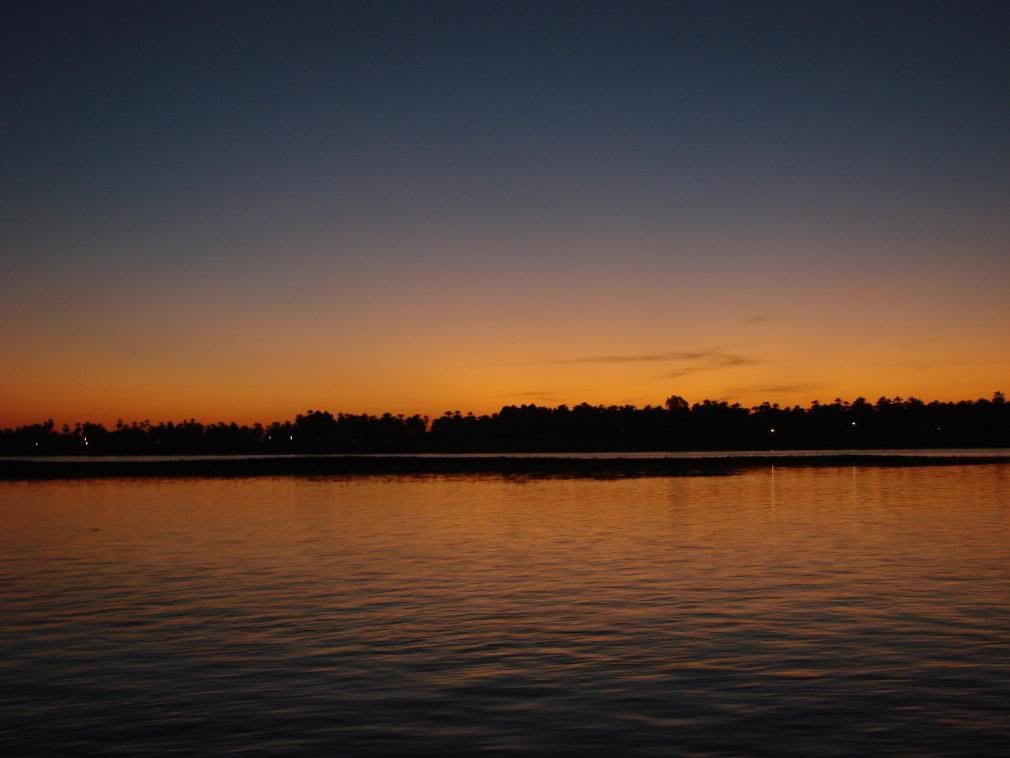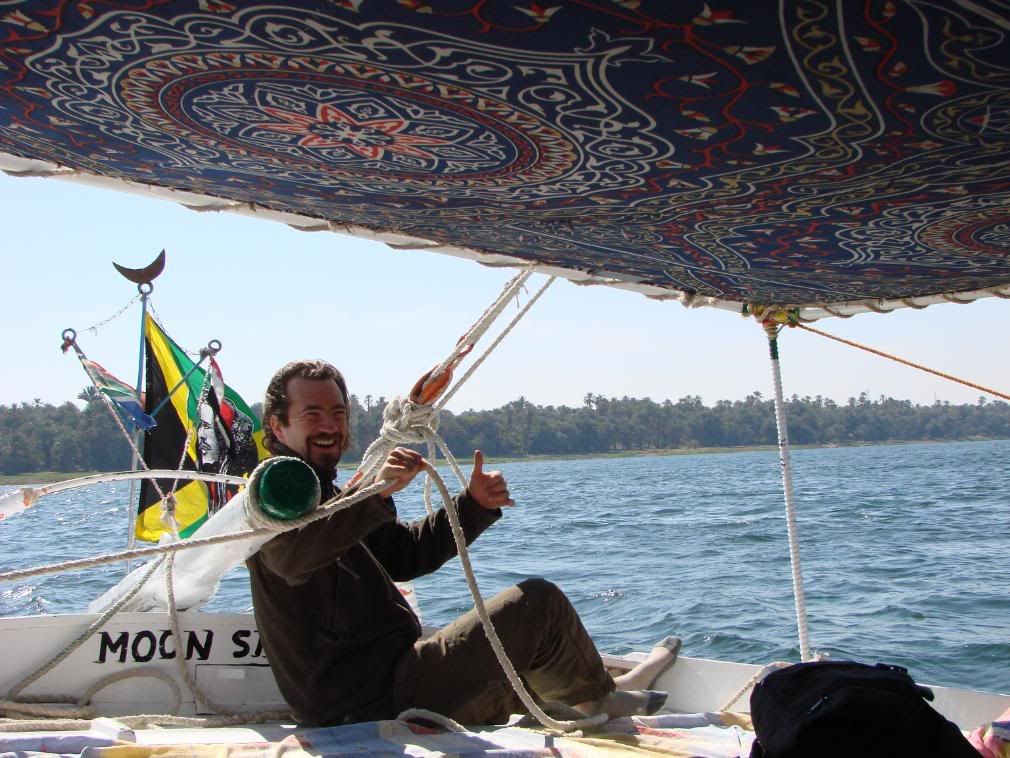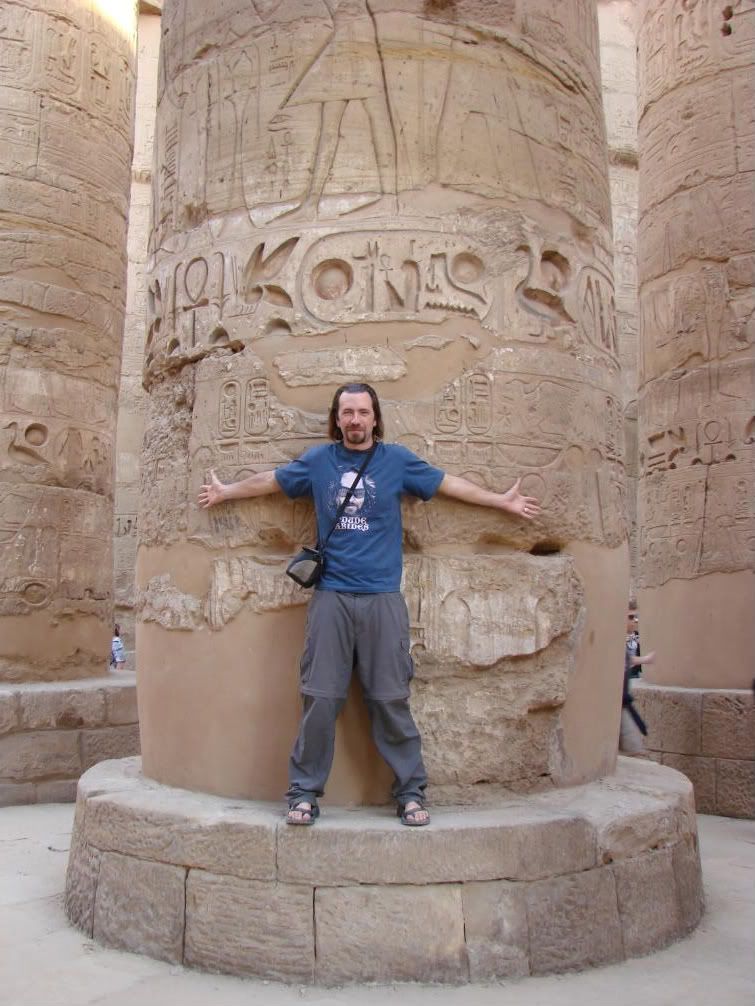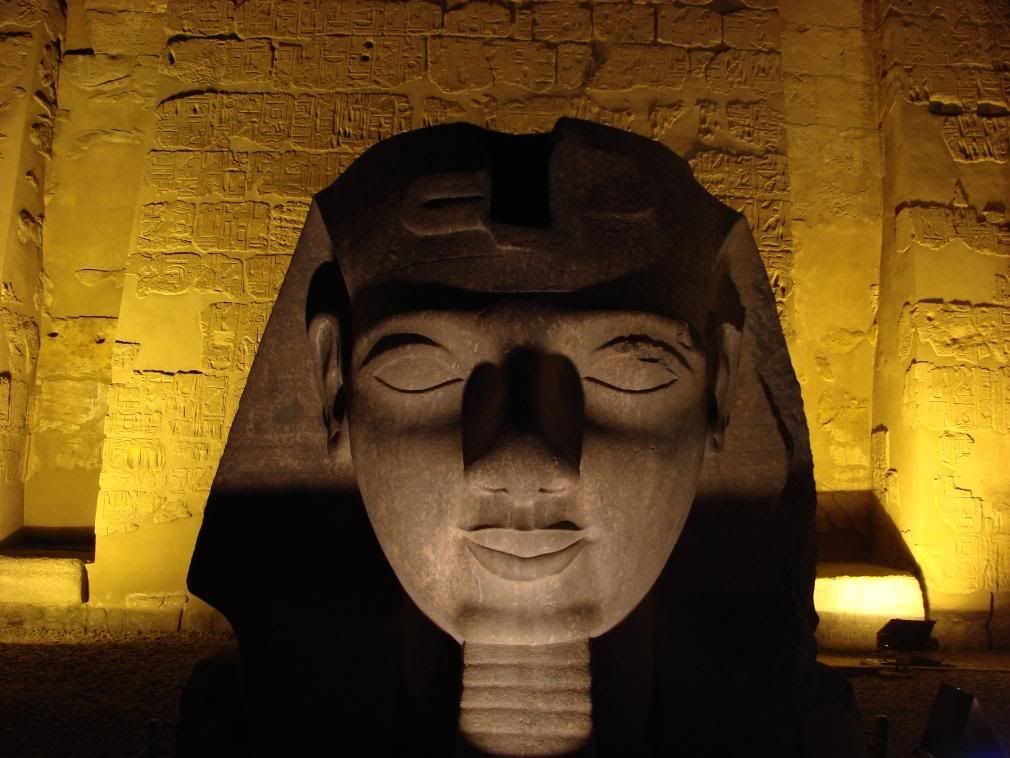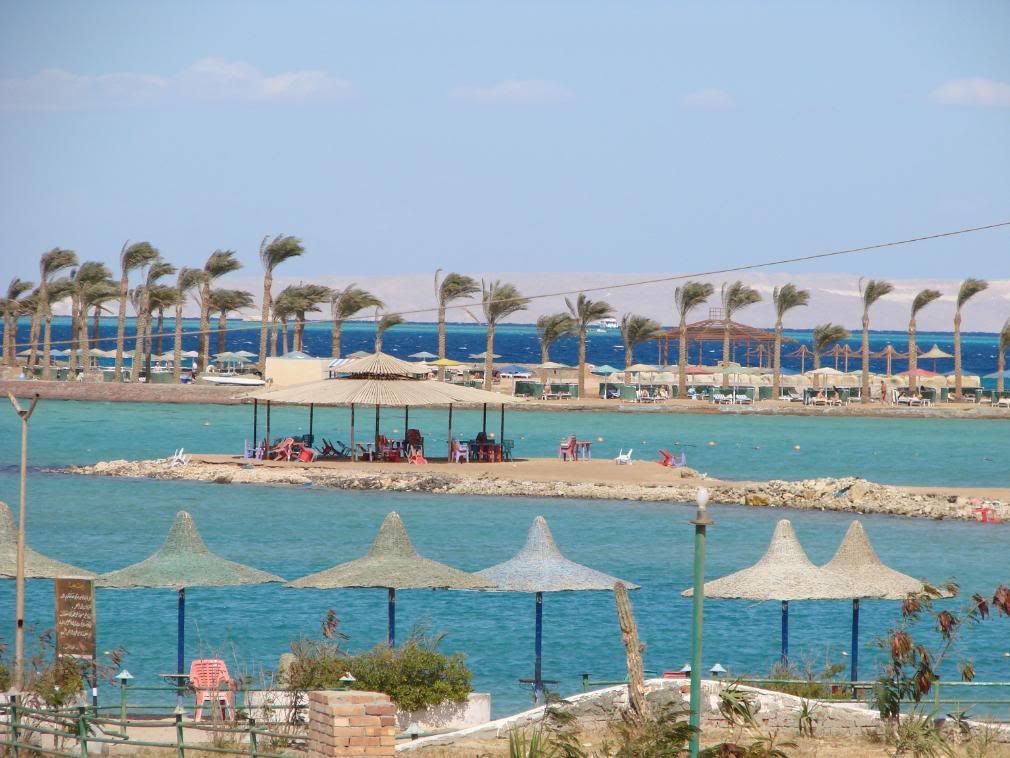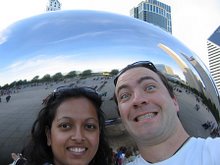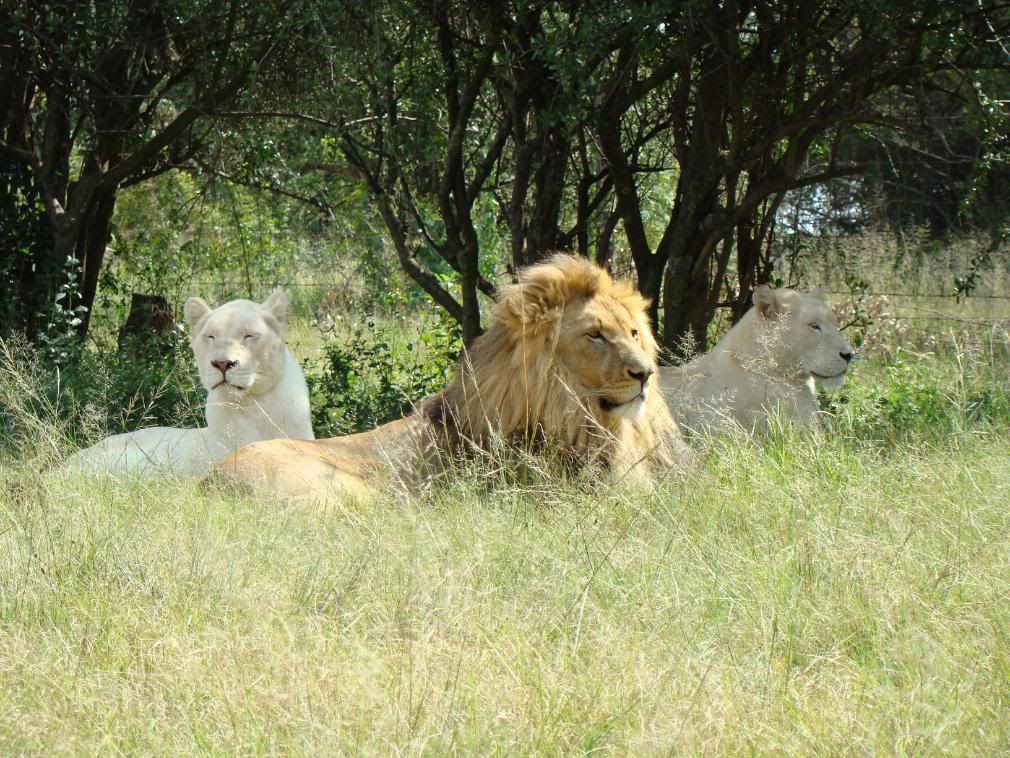 We were quite bemused when they showed us our rental: a like-new VW Citi model that hasn't been produced in the States in about 25 years, yet it remains one of the most popular cars in ZA due to its low cost. The rental company inexplicably had no maps for us so we got completely lost but managed to eventually get to Pretoria. As we drove around the 'posh' suburb of Hatfield looking for a hostel, we were struck by a few things. There was not a single car parked on the street and all of these nice looking houses were surrounded by gnarly security fences. As we would soon find out, cars were hidden away for good reason. When we tried to leave our car outside the fence for just a few minutes as put our things away, we learned that our particular model was the most frequently stolen car in the country and good thieves could steal it in as little as fifteen seconds. Speaking of the hostel, it was the first of a long line of wonderful places at which we stayed in ZA. Our bedroom was decorated with designer furniture and we enjoyed some wonderful breakfasts.
We were quite bemused when they showed us our rental: a like-new VW Citi model that hasn't been produced in the States in about 25 years, yet it remains one of the most popular cars in ZA due to its low cost. The rental company inexplicably had no maps for us so we got completely lost but managed to eventually get to Pretoria. As we drove around the 'posh' suburb of Hatfield looking for a hostel, we were struck by a few things. There was not a single car parked on the street and all of these nice looking houses were surrounded by gnarly security fences. As we would soon find out, cars were hidden away for good reason. When we tried to leave our car outside the fence for just a few minutes as put our things away, we learned that our particular model was the most frequently stolen car in the country and good thieves could steal it in as little as fifteen seconds. Speaking of the hostel, it was the first of a long line of wonderful places at which we stayed in ZA. Our bedroom was decorated with designer furniture and we enjoyed some wonderful breakfasts.We met some cool people at the hostel, including one local who kept saying a word we'd never heard before, lekker, which sounds like 'blackened' and is Afrikaans for 'awesome'. We also met a German guy who was doing his Ph.D. on the history of HIV Health Policy in ZA, which is very bizarre. Apparently the health minister was some sort of quack and convinced the president that the threat AIDS has been completely overblown and that traditional cures like lemon and garlic are just as effective as anti-retroviral drugs.
 These attitudes have completely derailed prevention efforts and ZA has one of the highest rates of HIV infection in the world. We hit the town that night and found ourselves surrounded by college students, as Pretoria is a big university town. Although we had a good time, we were struck by the blatant segregation; all the workers were Black while nearly all the revelers were White, and none of the groups were mixed. We speculated that this was how America must hav felt in the 50s.
These attitudes have completely derailed prevention efforts and ZA has one of the highest rates of HIV infection in the world. We hit the town that night and found ourselves surrounded by college students, as Pretoria is a big university town. Although we had a good time, we were struck by the blatant segregation; all the workers were Black while nearly all the revelers were White, and none of the groups were mixed. We speculated that this was how America must hav felt in the 50s.We spent one day shopping at several malls to buy a replacement camera and binoculars. With our new toys in tow, we headed to the nearby Lion Park, where we got to feed ostriches and giraffes and even pet some lion cubs. 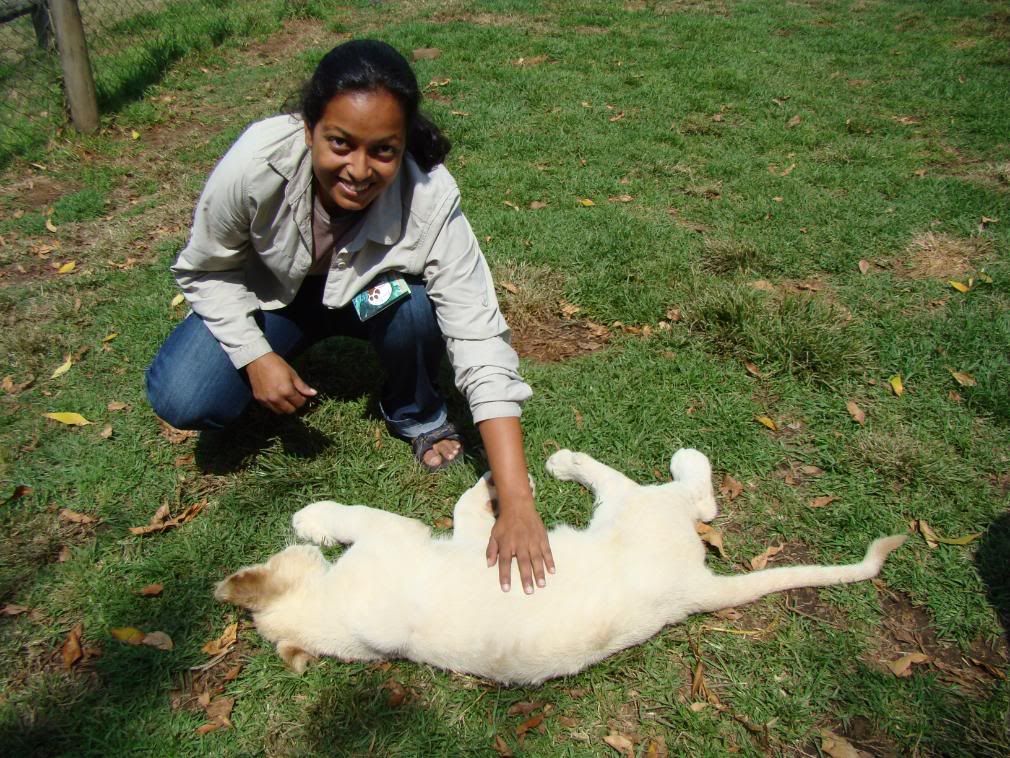 Despite being fairly young, we were repeatly warned to be careful and to protect our feet, as the cubs like to gnaw on shoes and even toes. Although we only had about five minutes with them, it was a great experience. We also went on a game drive through an area where about 80 lions roam wild. As we were creeping along, one of the massive males came right up next to our car, scaring us half to death. He leisurely walked by us and then plopped down right behind our car in the middle of the road.
Despite being fairly young, we were repeatly warned to be careful and to protect our feet, as the cubs like to gnaw on shoes and even toes. Although we only had about five minutes with them, it was a great experience. We also went on a game drive through an area where about 80 lions roam wild. As we were creeping along, one of the massive males came right up next to our car, scaring us half to death. He leisurely walked by us and then plopped down right behind our car in the middle of the road. 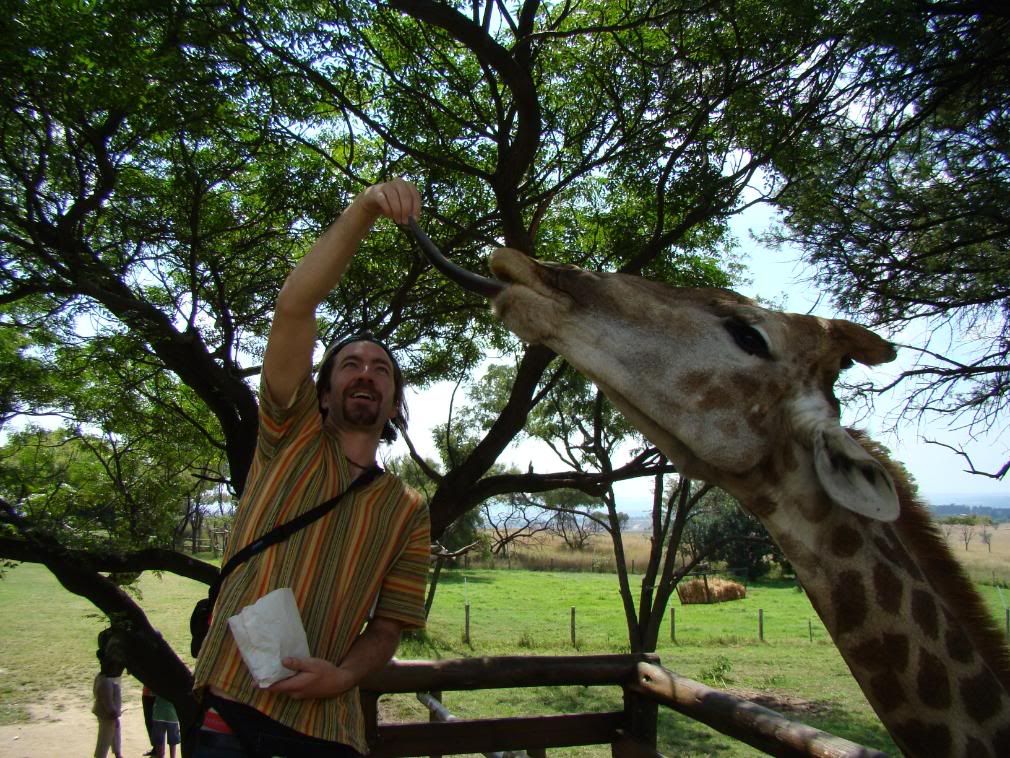 Unfortunately, we listened to the electronics salesman who said we didn't need an extra lithium battery, and so didn't have a replacement when our battery ran out just as he approached the car...doh! We had of course grown accustomed to losing pictures but we made sure to return the next day to get another battery.
Unfortunately, we listened to the electronics salesman who said we didn't need an extra lithium battery, and so didn't have a replacement when our battery ran out just as he approached the car...doh! We had of course grown accustomed to losing pictures but we made sure to return the next day to get another battery.
We headed north and took an unanticipated detour to the Sudwala caves, home to some fascinating rock formations including oned that looked like a giant claw and a horse's profile.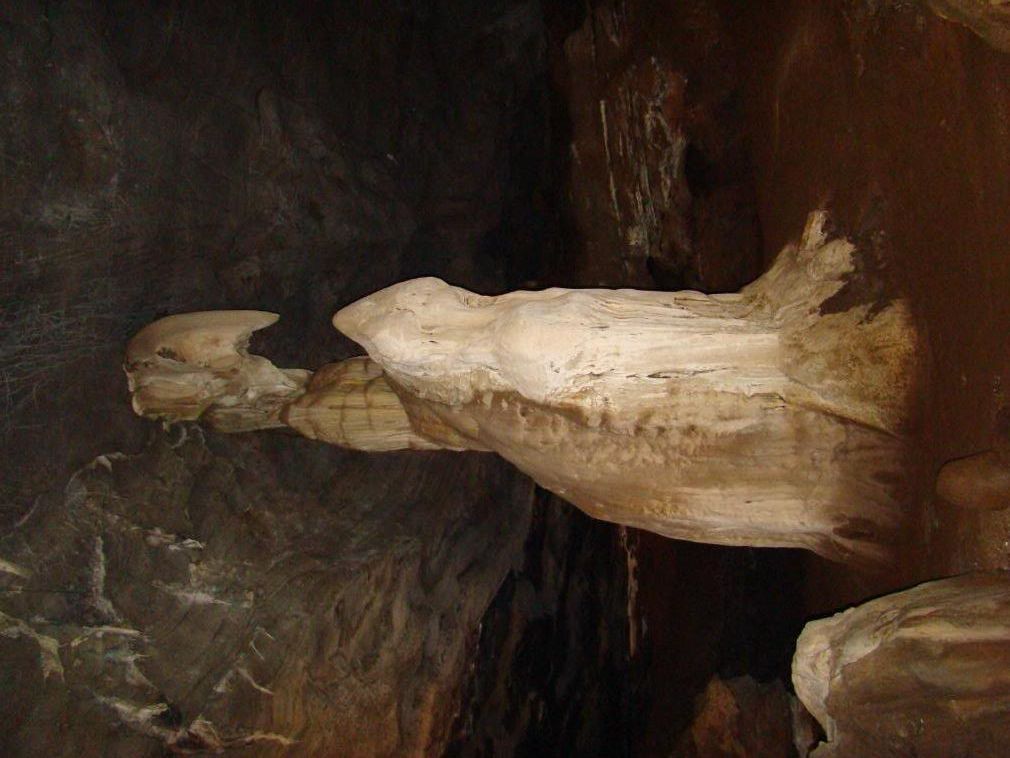 Our guide brought us to an area called the 'Amphitheatre' because it has great acoustics, and then turned off the lights. We found it disorienting to be in total darkness where we couldn't even detect the movement of our hands right in front of our faces. After the caves we coasted in to Sabie, which is known for its adventure sports. One day we went tubing down a river, which was like rafting except we had individual tubes. Our guide was great and we had a blast getting tipped over in the rapids and going down a natural waterslide sans tubes. The following day we tried abseiling (basically the opposite of rock climbing) down a canyon next to a waterfall.
Our guide brought us to an area called the 'Amphitheatre' because it has great acoustics, and then turned off the lights. We found it disorienting to be in total darkness where we couldn't even detect the movement of our hands right in front of our faces. After the caves we coasted in to Sabie, which is known for its adventure sports. One day we went tubing down a river, which was like rafting except we had individual tubes. Our guide was great and we had a blast getting tipped over in the rapids and going down a natural waterslide sans tubes. The following day we tried abseiling (basically the opposite of rock climbing) down a canyon next to a waterfall.  That first step backwards over the cliff was one of the scariest things we've ever done. At the end of the rope, we dropped into a freezing cold river. Jason went first and was mesmerized by the view of Priti abseiling, so decided to go again so we could take picture. But alas, by the time we got back to the top, the guide had dismantled the equipment. That night we hung out with a local who took us to one of the local bars, where, in between harassments from the locals, he told us how he was a contestant in some sort of survivor-type game in which he had to bike 10K kms for 2 million Rand ($250K). In retrospect, he was probably pulling a fast one (we bought a couple of his homemade sculptures), but were satisfied because at least we finally learned the rules of cricket and rugby. A more genuine companion we met in Sabie was Isis, the hostel manager's Boer Bull, who kept climbing into our beds.
That first step backwards over the cliff was one of the scariest things we've ever done. At the end of the rope, we dropped into a freezing cold river. Jason went first and was mesmerized by the view of Priti abseiling, so decided to go again so we could take picture. But alas, by the time we got back to the top, the guide had dismantled the equipment. That night we hung out with a local who took us to one of the local bars, where, in between harassments from the locals, he told us how he was a contestant in some sort of survivor-type game in which he had to bike 10K kms for 2 million Rand ($250K). In retrospect, he was probably pulling a fast one (we bought a couple of his homemade sculptures), but were satisfied because at least we finally learned the rules of cricket and rugby. A more genuine companion we met in Sabie was Isis, the hostel manager's Boer Bull, who kept climbing into our beds. 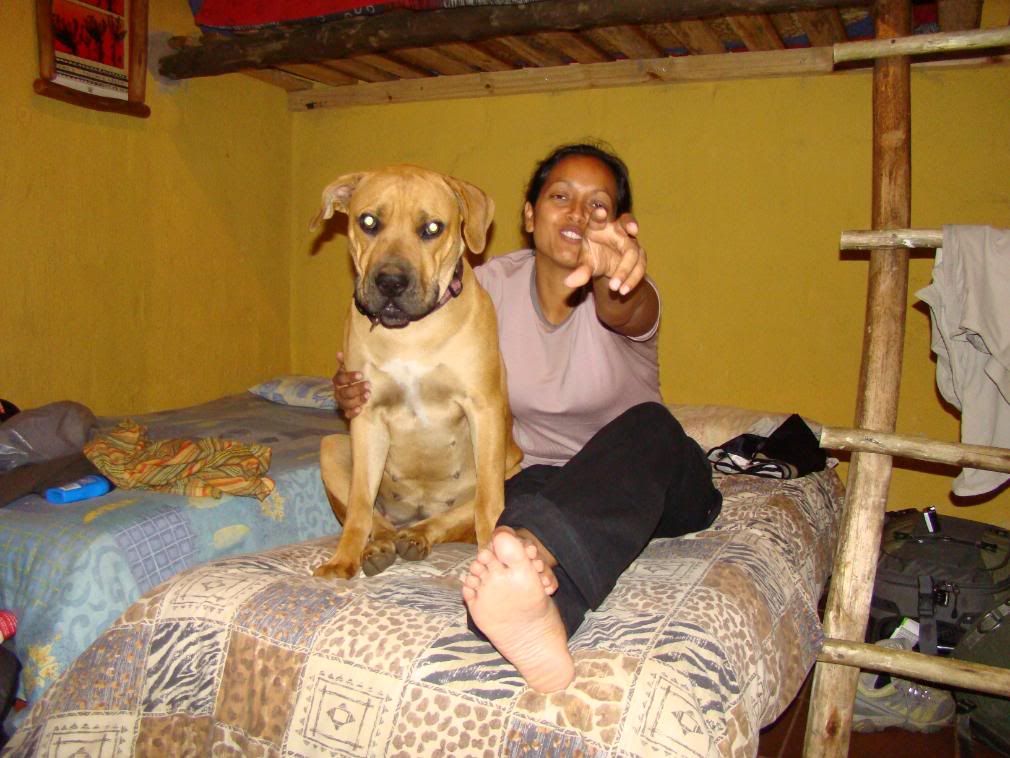 This means our two favorite dogs in the world share the same name. Also, Priti decided that she has t have one and fortunately there are breeders in the States.
This means our two favorite dogs in the world share the same name. Also, Priti decided that she has t have one and fortunately there are breeders in the States.
 Despite being fairly young, we were repeatly warned to be careful and to protect our feet, as the cubs like to gnaw on shoes and even toes. Although we only had about five minutes with them, it was a great experience. We also went on a game drive through an area where about 80 lions roam wild. As we were creeping along, one of the massive males came right up next to our car, scaring us half to death. He leisurely walked by us and then plopped down right behind our car in the middle of the road.
Despite being fairly young, we were repeatly warned to be careful and to protect our feet, as the cubs like to gnaw on shoes and even toes. Although we only had about five minutes with them, it was a great experience. We also went on a game drive through an area where about 80 lions roam wild. As we were creeping along, one of the massive males came right up next to our car, scaring us half to death. He leisurely walked by us and then plopped down right behind our car in the middle of the road.  Unfortunately, we listened to the electronics salesman who said we didn't need an extra lithium battery, and so didn't have a replacement when our battery ran out just as he approached the car...doh! We had of course grown accustomed to losing pictures but we made sure to return the next day to get another battery.
Unfortunately, we listened to the electronics salesman who said we didn't need an extra lithium battery, and so didn't have a replacement when our battery ran out just as he approached the car...doh! We had of course grown accustomed to losing pictures but we made sure to return the next day to get another battery.We headed north and took an unanticipated detour to the Sudwala caves, home to some fascinating rock formations including oned that looked like a giant claw and a horse's profile.
 Our guide brought us to an area called the 'Amphitheatre' because it has great acoustics, and then turned off the lights. We found it disorienting to be in total darkness where we couldn't even detect the movement of our hands right in front of our faces. After the caves we coasted in to Sabie, which is known for its adventure sports. One day we went tubing down a river, which was like rafting except we had individual tubes. Our guide was great and we had a blast getting tipped over in the rapids and going down a natural waterslide sans tubes. The following day we tried abseiling (basically the opposite of rock climbing) down a canyon next to a waterfall.
Our guide brought us to an area called the 'Amphitheatre' because it has great acoustics, and then turned off the lights. We found it disorienting to be in total darkness where we couldn't even detect the movement of our hands right in front of our faces. After the caves we coasted in to Sabie, which is known for its adventure sports. One day we went tubing down a river, which was like rafting except we had individual tubes. Our guide was great and we had a blast getting tipped over in the rapids and going down a natural waterslide sans tubes. The following day we tried abseiling (basically the opposite of rock climbing) down a canyon next to a waterfall.  That first step backwards over the cliff was one of the scariest things we've ever done. At the end of the rope, we dropped into a freezing cold river. Jason went first and was mesmerized by the view of Priti abseiling, so decided to go again so we could take picture. But alas, by the time we got back to the top, the guide had dismantled the equipment. That night we hung out with a local who took us to one of the local bars, where, in between harassments from the locals, he told us how he was a contestant in some sort of survivor-type game in which he had to bike 10K kms for 2 million Rand ($250K). In retrospect, he was probably pulling a fast one (we bought a couple of his homemade sculptures), but were satisfied because at least we finally learned the rules of cricket and rugby. A more genuine companion we met in Sabie was Isis, the hostel manager's Boer Bull, who kept climbing into our beds.
That first step backwards over the cliff was one of the scariest things we've ever done. At the end of the rope, we dropped into a freezing cold river. Jason went first and was mesmerized by the view of Priti abseiling, so decided to go again so we could take picture. But alas, by the time we got back to the top, the guide had dismantled the equipment. That night we hung out with a local who took us to one of the local bars, where, in between harassments from the locals, he told us how he was a contestant in some sort of survivor-type game in which he had to bike 10K kms for 2 million Rand ($250K). In retrospect, he was probably pulling a fast one (we bought a couple of his homemade sculptures), but were satisfied because at least we finally learned the rules of cricket and rugby. A more genuine companion we met in Sabie was Isis, the hostel manager's Boer Bull, who kept climbing into our beds.  This means our two favorite dogs in the world share the same name. Also, Priti decided that she has t have one and fortunately there are breeders in the States.
This means our two favorite dogs in the world share the same name. Also, Priti decided that she has t have one and fortunately there are breeders in the States.After Sabie, we ventured to Kruger National Park for five days of safaris. The accomodations were excellent and we saw tons of wildlife. For those who have not been on safaris, there is an almost rabid fascination with seeing the 'Big 5', which is the buffalo, elephant, black rhinoceros, leopard, and lion.
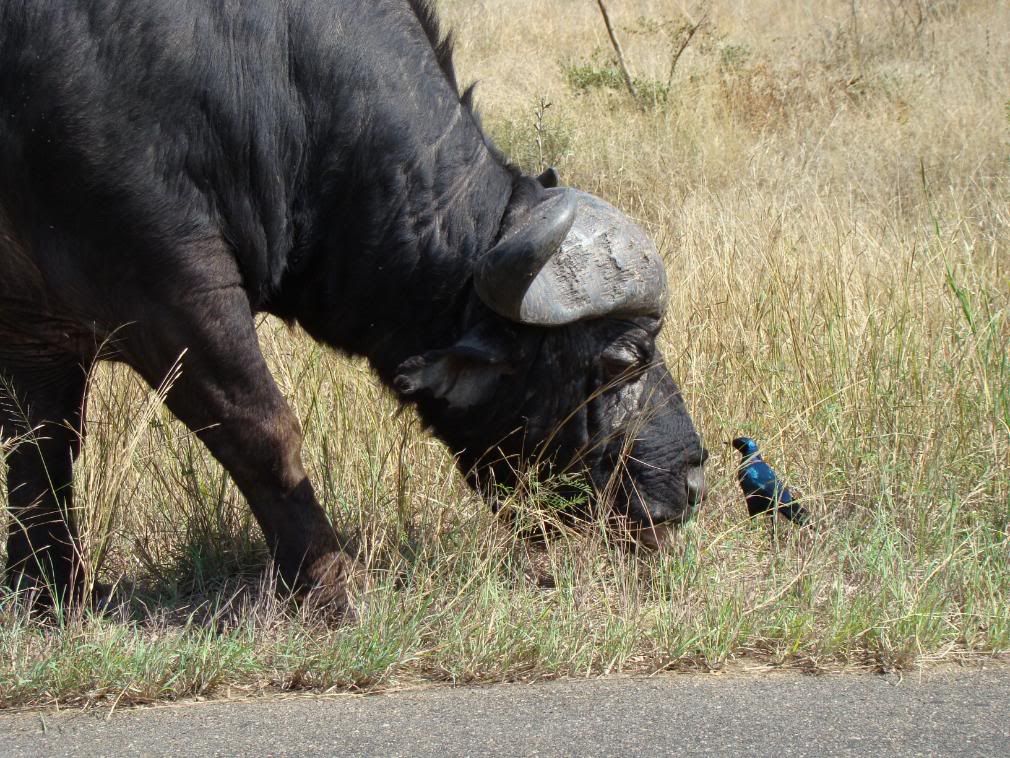 On the first few days, we saw dozens of buffalos and elephants. We saw several black rhinos as well but hadn't seen any cats.
On the first few days, we saw dozens of buffalos and elephants. We saw several black rhinos as well but hadn't seen any cats. 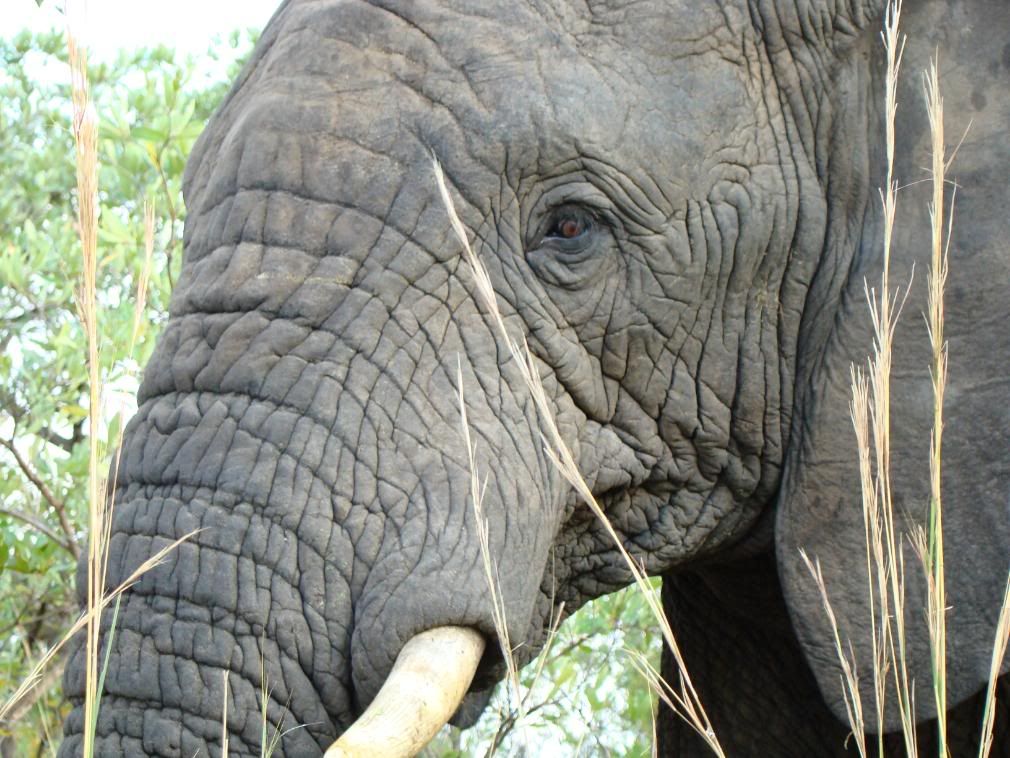 For some reason, our first two campsites did not offer night drives, but fortunately our third camp did.
For some reason, our first two campsites did not offer night drives, but fortunately our third camp did. 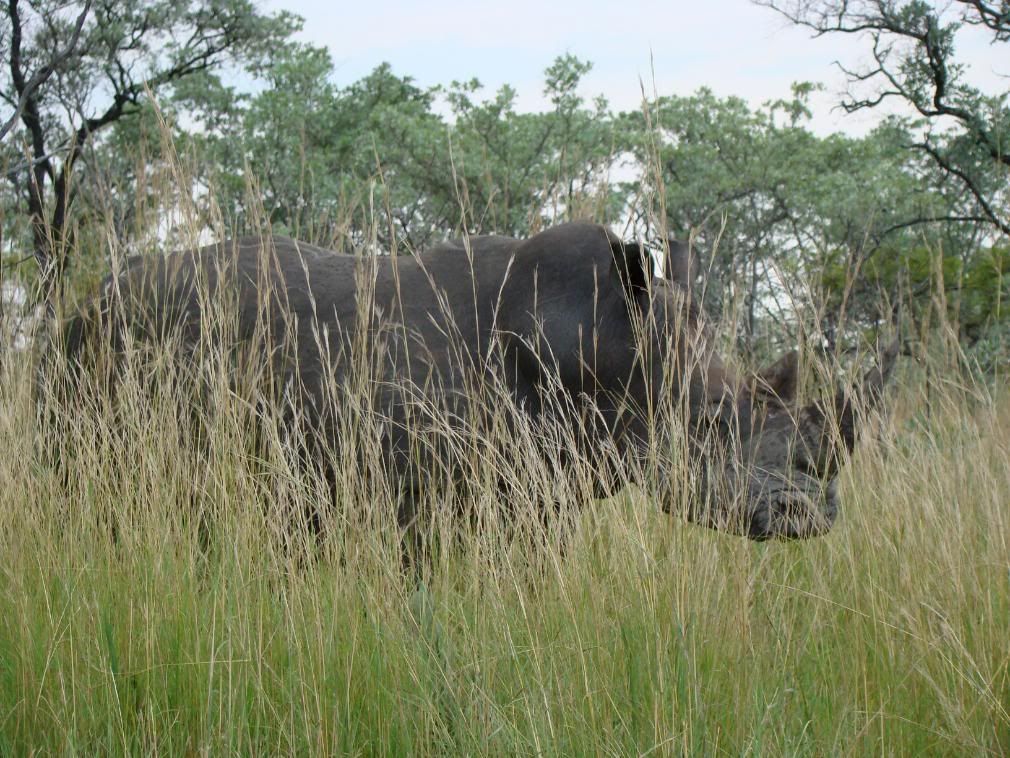 On the night drive we spotted a cat in the distance and the guide said it was likely a leopard due to its size. As we approached closer, it turned out to be a lion cub that had been separated from its mother and was emitting distress calls. Our guide explained how in all likelihood this cub sadly would get eaten by hyenas because it had been abandoned. But, lo and behold, further along the road we found the mother, emitting her own distress calls, along with two other lionesses and three other cubs, meaning there would be a happy reunion that night.
On the night drive we spotted a cat in the distance and the guide said it was likely a leopard due to its size. As we approached closer, it turned out to be a lion cub that had been separated from its mother and was emitting distress calls. Our guide explained how in all likelihood this cub sadly would get eaten by hyenas because it had been abandoned. But, lo and behold, further along the road we found the mother, emitting her own distress calls, along with two other lionesses and three other cubs, meaning there would be a happy reunion that night. 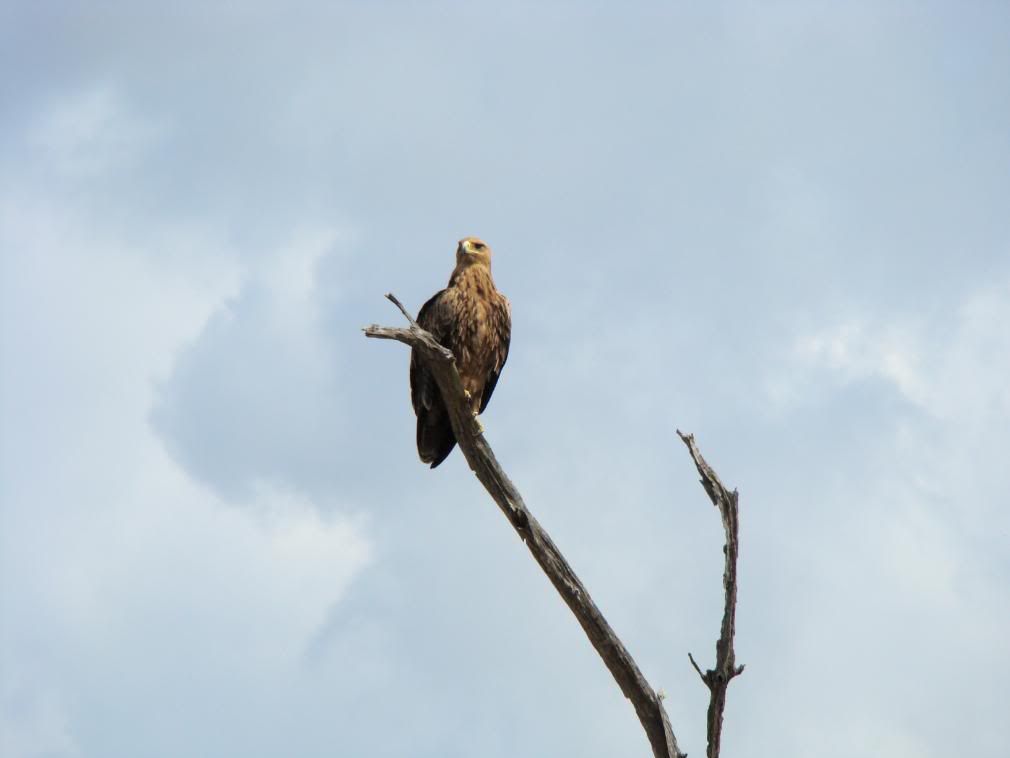 Unfortunately, despite awaking at dawn five day in a row (no kidding), we missed the elusive leopard, which wasn't too surprising since they are rare and spend most of their time up in trees.
Unfortunately, despite awaking at dawn five day in a row (no kidding), we missed the elusive leopard, which wasn't too surprising since they are rare and spend most of their time up in trees.  Besides the Big 5, we saw tons of other animals including hyenas, hippos, eagles, zebras, wildebeasts, monkeys, baboons, warthogs, springboks, kudus, giraffes, ostriches, wild bucks, genets, and kingfishers to name some.
Besides the Big 5, we saw tons of other animals including hyenas, hippos, eagles, zebras, wildebeasts, monkeys, baboons, warthogs, springboks, kudus, giraffes, ostriches, wild bucks, genets, and kingfishers to name some.  Overall, it was an amazing experience and what is nice about Kruger is that it is relatively affordable and it is all self-drive, with the option for guided drives as well.
Overall, it was an amazing experience and what is nice about Kruger is that it is relatively affordable and it is all self-drive, with the option for guided drives as well.We headed back to Sabie, stopping along the way to see the Blyde River Canyon, which is the third largest canyon in the world (after the Grand Canyon and Fish River Canyon in Namibia). Some of the great sites along the panorama route of the canyon included Bourke's Luck Potholes, which is an impressive expanse of rock pool formations.
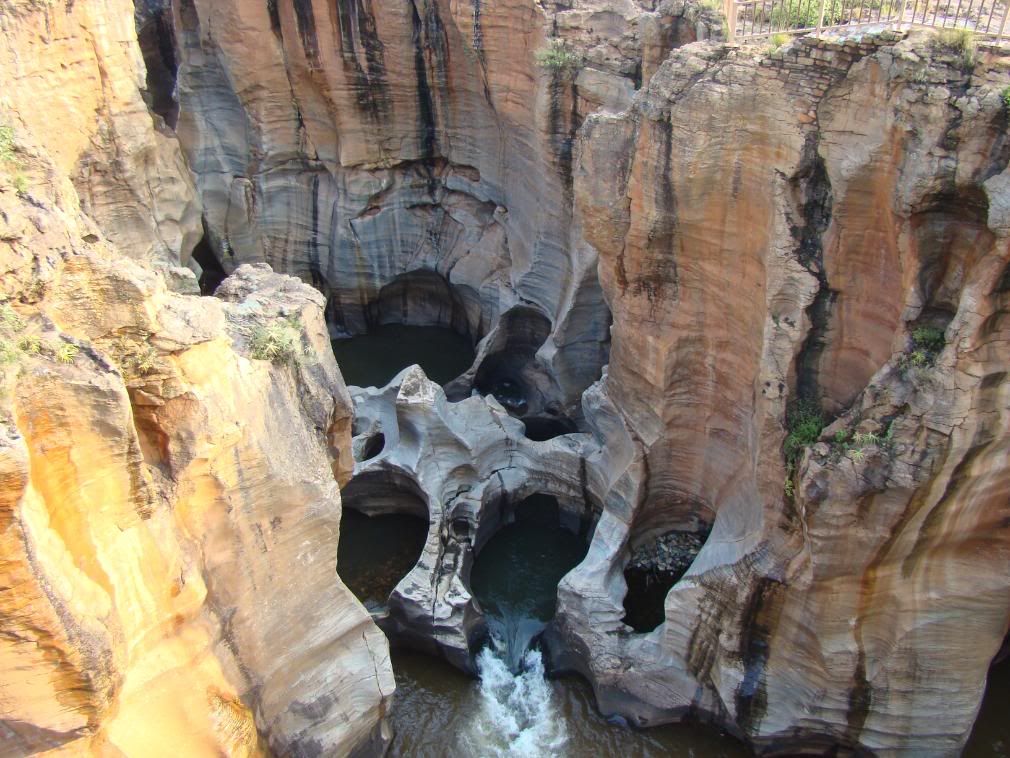 Another spot was called the 'Three Rondavels' due to its similarity to the conical huts found in the local villages. Finally, we stopped at a place called 'God's Window' which, with a name like that, we expected to be much more impressive. That night, after reuniting with Isis, we went to a restaurant where Jason got to continue his culinary adventures by trying warthog casserole, which was ok.
Another spot was called the 'Three Rondavels' due to its similarity to the conical huts found in the local villages. Finally, we stopped at a place called 'God's Window' which, with a name like that, we expected to be much more impressive. That night, after reuniting with Isis, we went to a restaurant where Jason got to continue his culinary adventures by trying warthog casserole, which was ok.Our next stop was a town almost no one has heard of called Kestell, which is nestled along the Lestotho border and the Northern Drakensburg mountain range. The town itself is just a blip but the place we stayed, Karma Backpackrs, was magnificent, essentially a B&B at a backpacker price. FYI, for anyone traveling to ZA, they have these local budget accommodation guides that we used exclusively to find hostels, although some of them were also listed in our LP guidebook. The owner Vera Ann, was like the cool grandmother everyone wishes they had. For breakfast each morning, we could try any of her dozens homemade jams (Watermelon & Rosewater and Brandy, Plum & Walnut were our favorites). She also had some great pets, including a cat named 'dog.' During the days, we went on some hikes.
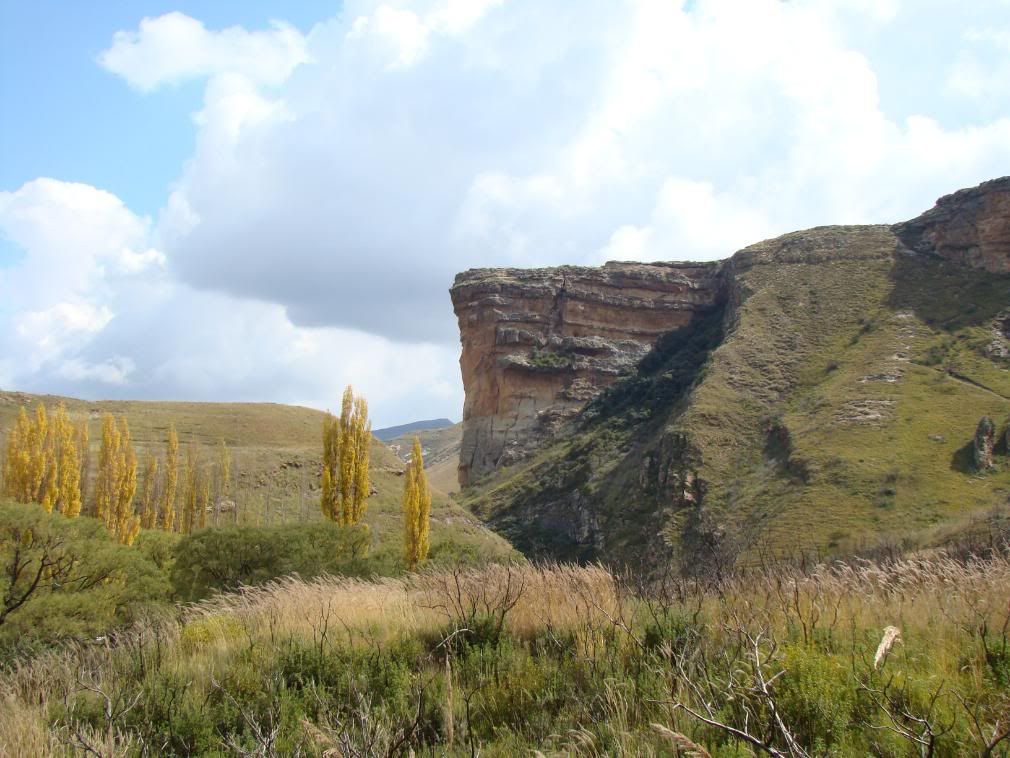 First, we attempted to hike along the famous Amphtitheater but were thwarted by the weather, so we didn't get to climb the rope ladder which was needed to reach the summit. Despite the weather, we were treated to some spectacular views. We spent the evenings chatting with Vera Ann and her husband, and learned more about the precarious political situation in ZA and how many people are trying to get away due to the increasing violence. They also speculated that the 2010 World Cup will have to be moved to the back-up site (Australia) because they are so behind schedule. On our way out of Kestell, we stopped for another day of hiking at Royal Natal NP.
First, we attempted to hike along the famous Amphtitheater but were thwarted by the weather, so we didn't get to climb the rope ladder which was needed to reach the summit. Despite the weather, we were treated to some spectacular views. We spent the evenings chatting with Vera Ann and her husband, and learned more about the precarious political situation in ZA and how many people are trying to get away due to the increasing violence. They also speculated that the 2010 World Cup will have to be moved to the back-up site (Australia) because they are so behind schedule. On our way out of Kestell, we stopped for another day of hiking at Royal Natal NP.After an uneventful night further south along the Drakensburgs, we headed for the Wild Coast. Our first stop was supposed to be Port St. Johns. However, after hearing another traveler report a recent string of hold-ups at the hostels we were on guard and when we arrived it was so sketchy that we just turned back around. It was so bad that we were afraid to eat lunch in the restaurant for fear our car would be gone before we returned.
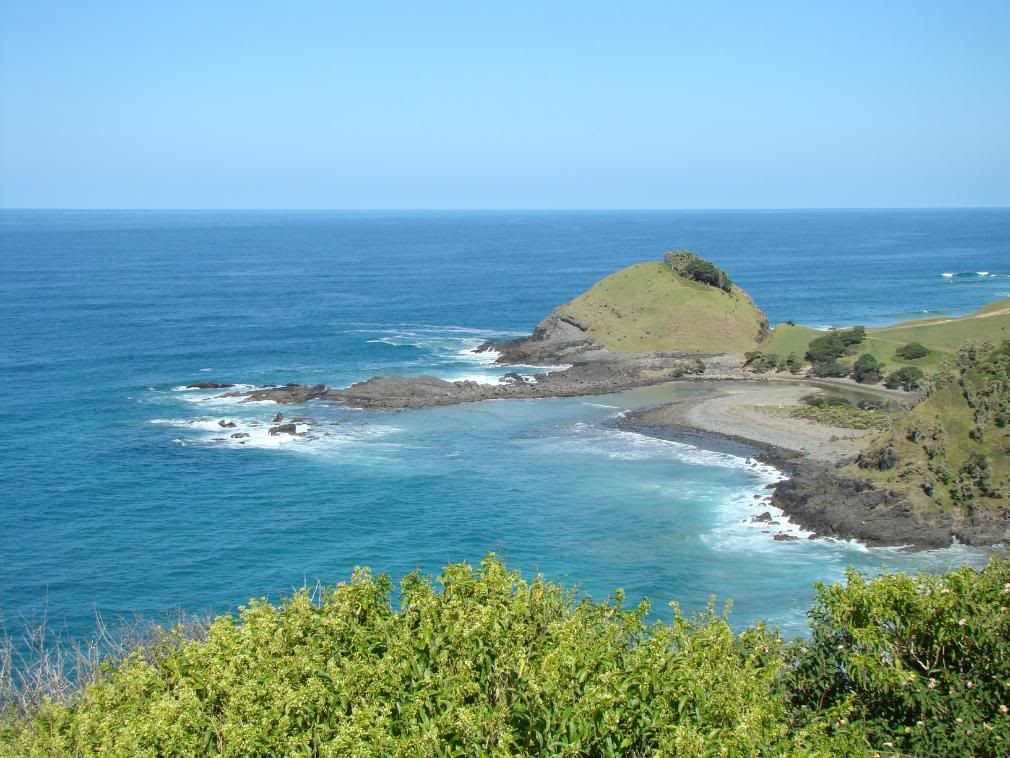 Thus, after a full day of driving, we had another few hour to get to Coffee Bay, which is known to have a hippy vibe. Generally, we have not liked such spots, but in Coffee Bay it was relaxed and good-natured fun. Jason joined a group on a day hike along the cliffs and to Mapuzzi cave, which was the foullest smelling cave he'd ever been in. He also partook in some cliff jumping into a river since the ocean was too choppy to jump into. Another day we lounged at the beach and played some beach volleyball, and Jason took advantage of some free surf lessons. He even managed to stay on the board...once... for about five seconds.
Thus, after a full day of driving, we had another few hour to get to Coffee Bay, which is known to have a hippy vibe. Generally, we have not liked such spots, but in Coffee Bay it was relaxed and good-natured fun. Jason joined a group on a day hike along the cliffs and to Mapuzzi cave, which was the foullest smelling cave he'd ever been in. He also partook in some cliff jumping into a river since the ocean was too choppy to jump into. Another day we lounged at the beach and played some beach volleyball, and Jason took advantage of some free surf lessons. He even managed to stay on the board...once... for about five seconds.  One evening, we reluctantly joined a 'cultural' tour to the local village. The food was not too good and the homemade beer was worse. After dinner, the locals put on a dance show before asking us to join them. It was a bit uncomfortable for us because the females, aged eight to fifteen, all were topless and our guide kept saying "shake that body" in a very dirtbaggish way. And shook their bodies they did, to a rhythm created on makeshift percussion instruments handled by the village elders. After the girls finished, the boys gave their routine, which in contrast was them just shuffling along in a big circle.
One evening, we reluctantly joined a 'cultural' tour to the local village. The food was not too good and the homemade beer was worse. After dinner, the locals put on a dance show before asking us to join them. It was a bit uncomfortable for us because the females, aged eight to fifteen, all were topless and our guide kept saying "shake that body" in a very dirtbaggish way. And shook their bodies they did, to a rhythm created on makeshift percussion instruments handled by the village elders. After the girls finished, the boys gave their routine, which in contrast was them just shuffling along in a big circle.Inclement weather arrived on the coast, so we decided to head back inland to Hogsback, which had been recommended by a few other people. It has made a name for mostly due to Tolkien having spent some of his childhood there and thus apparently finding inspiration from the
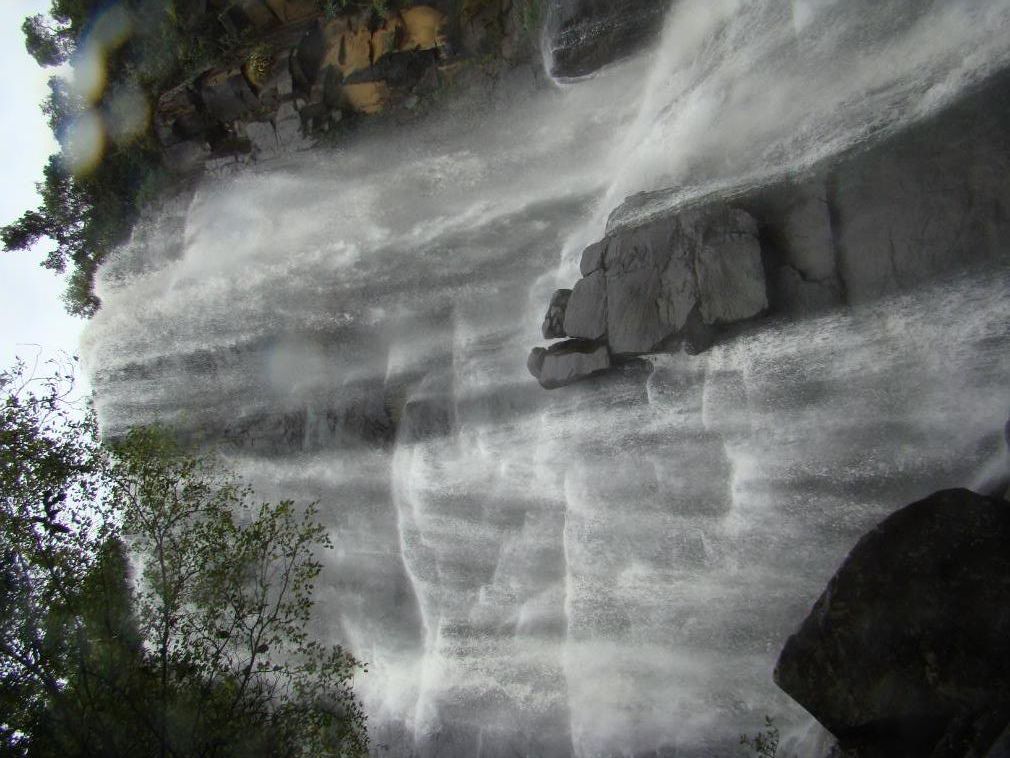 surrounding countryside in creating Middle Earth. Nearly every business in town had some reference to the Hobbitt in its name (our hostel was called Away with the Fairies). As we hiked through the misty mountains past stunning waterfalls, we understood how people could make the connection.
surrounding countryside in creating Middle Earth. Nearly every business in town had some reference to the Hobbitt in its name (our hostel was called Away with the Fairies). As we hiked through the misty mountains past stunning waterfalls, we understood how people could make the connection.After Hogsback, we went to Addo Elephant NP for an afternoon of game drives, before heading back to the coast to Storms River. Loyal readers of the blog may recall that Jason wanted to do the Nevis bungy jump in NZ but passed it up when he found out there was a taller on in ZA. Well, this was it, all 216 meters of it.
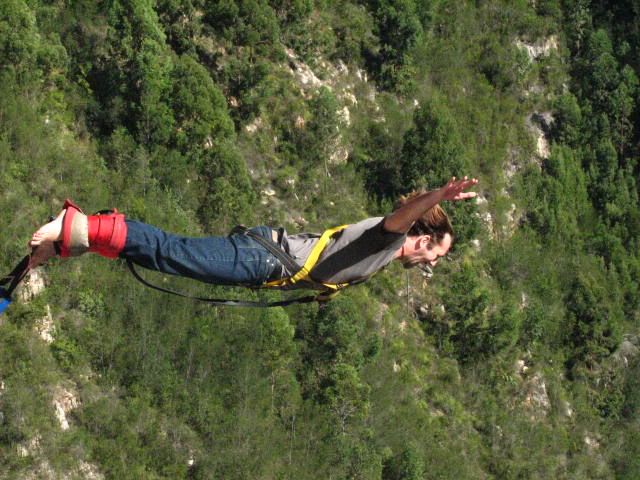 As he walked along the bridge, the adrenaline began to build the jump itself was a rush unlike any other. The only disappointment was that the workers did not allow him to soak in the fear by standing on the edge, as they started counting down almost immediately. They claimed that if they didn't then too many people would back out.
As he walked along the bridge, the adrenaline began to build the jump itself was a rush unlike any other. The only disappointment was that the workers did not allow him to soak in the fear by standing on the edge, as they started counting down almost immediately. They claimed that if they didn't then too many people would back out.Buzzing with adrenaline, we headed to yet another NP, Tsitsikamma, where Jason continued his natural high by going on one of the toughest and most amazing hikes he's ever been on, the Otter Trail. The barely existent trail followed the ragged cliffs and every 200 meters or so the scenery changed.
 Parts of the trail involved bouldering while other parts he was hunched over going through forest tunnels. He saw only a few other hikers and some wild animals along the way, and at the end there was a spectacular waterfall. Meanwhile, Priti had a relaxing day on the beach enjoying a book while listening to the waves crashing the shore.
Parts of the trail involved bouldering while other parts he was hunched over going through forest tunnels. He saw only a few other hikers and some wild animals along the way, and at the end there was a spectacular waterfall. Meanwhile, Priti had a relaxing day on the beach enjoying a book while listening to the waves crashing the shore. We continued down the coast along the Garden Route to Plettenberg Bay, known by the locals as 'Plett.' We found another awesome place to stay, about 6 kms outside of town that had a great deck with a superb view of the city and the bay. In the mornings we could see dozens of dolphins swimming up the coast.
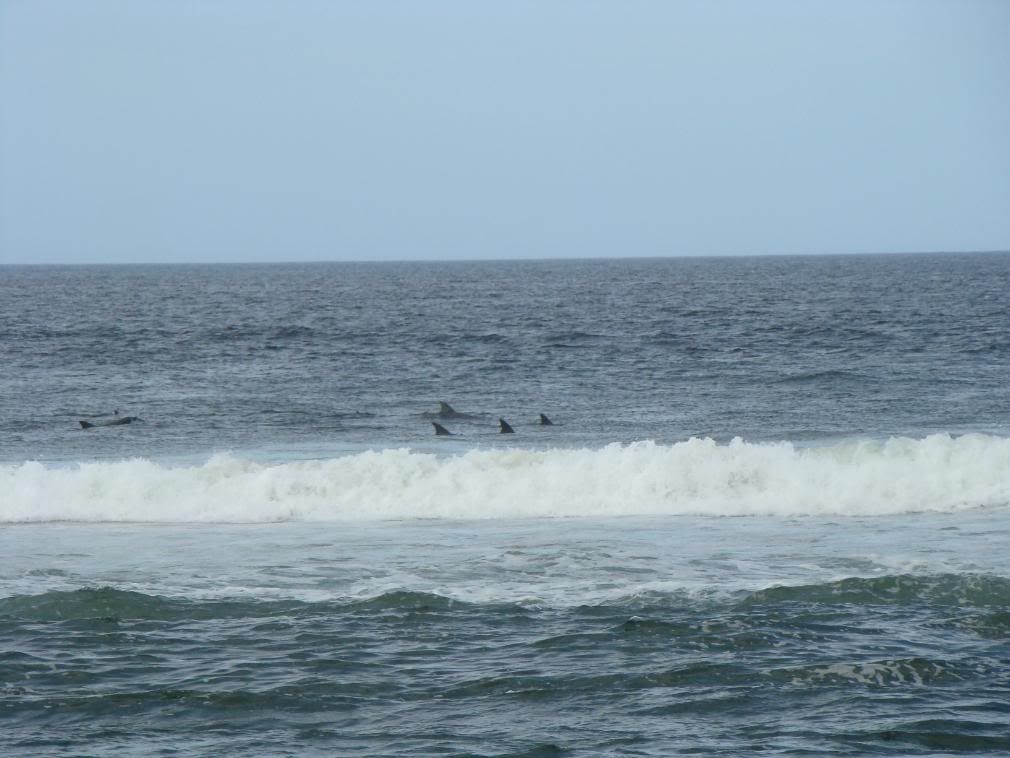 For the first time in awhile, we enjoyed the cuisine, including kingclip (a fish we'd never tried) and for the first time during our entire trip, good Mexican food (chicken burritos). We would have never even bothered trying it as we had long ago given up hope of finding good Mexcian food, but the owner of the roadside stall was friends with the hostel owner so we gave him the benefit of the doubt. Plett is pretty touristy so there was plenty to do. We went to a glorified zoo called 'Monkeyland', and we posted some of those pics in the Madagascar entry.
For the first time in awhile, we enjoyed the cuisine, including kingclip (a fish we'd never tried) and for the first time during our entire trip, good Mexican food (chicken burritos). We would have never even bothered trying it as we had long ago given up hope of finding good Mexcian food, but the owner of the roadside stall was friends with the hostel owner so we gave him the benefit of the doubt. Plett is pretty touristy so there was plenty to do. We went to a glorified zoo called 'Monkeyland', and we posted some of those pics in the Madagascar entry. 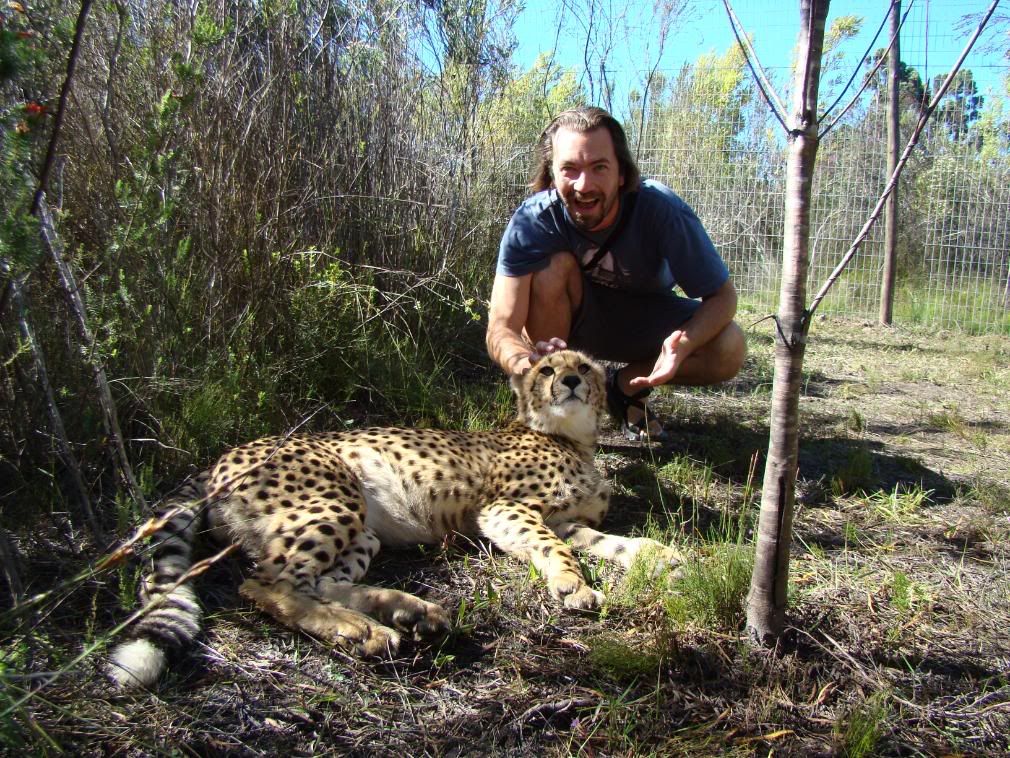 We continued our wildlife tour by visiting another wild cat park where we got to pet a cheetah...seeing all these cats reminded Jason of Billy and Simone back in Omaha. We also went on a nice hike along the coast in Robberg NP.
We continued our wildlife tour by visiting another wild cat park where we got to pet a cheetah...seeing all these cats reminded Jason of Billy and Simone back in Omaha. We also went on a nice hike along the coast in Robberg NP.On our way out of town, we decided to buy a tent because it seemed as if Namibia (our next destination) was going to be very expensive. So, we headed north through the Karoo, a vast desolate desert, to a place called Graff-Reinet, a Dutch colonial town which had lots of aesthetically pleasing historical buildings.
Since we didn't have much time to spare, we dropped off our stuff and explored the Valley of Desolation, which reminded us a lot of Arizona with its red rock formations. While we were gone, the owners of the hostel kindly booked us reservations at one of the local game restaurants, and we feasted on kudu and ostrich (our favorite). He also showed us around his members only club and shared some of the history of the town.
Our final stop before crossing over to Namibia was Augrabies NP, near Upington. We stayed at a campsite nearby and hung out with some locals under a mesmerizing sunset.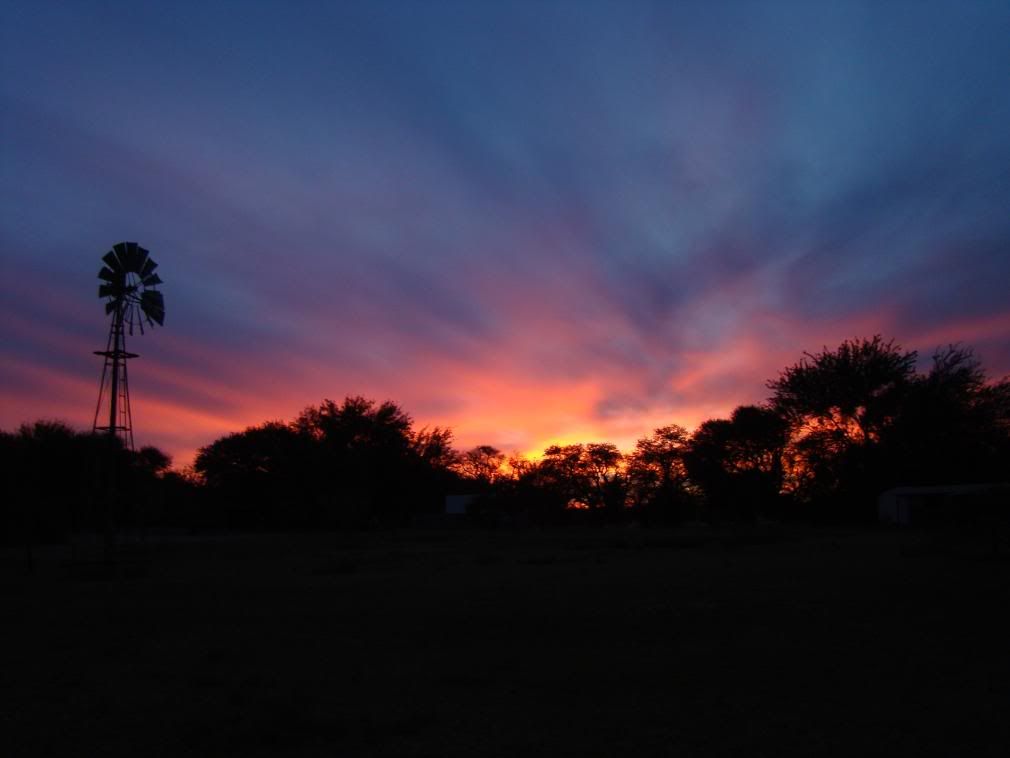 We'd already logged tons of kms over the past few days so we had a pretty quiet evening on Jason's birthday. Although the falls weren't that spectacular because the water was relatively low, the park itself was beautiful. On a hike through the park there were multi-colored lizards on the rocks that were pretty interesting as well as dassies, which look like beavers but their closest genetic relatives are elephants. Stay tuned for the Namibia update along with the rest of ZA (we never did find out why they abbreviate it ZA rather than SA).
We'd already logged tons of kms over the past few days so we had a pretty quiet evening on Jason's birthday. Although the falls weren't that spectacular because the water was relatively low, the park itself was beautiful. On a hike through the park there were multi-colored lizards on the rocks that were pretty interesting as well as dassies, which look like beavers but their closest genetic relatives are elephants. Stay tuned for the Namibia update along with the rest of ZA (we never did find out why they abbreviate it ZA rather than SA).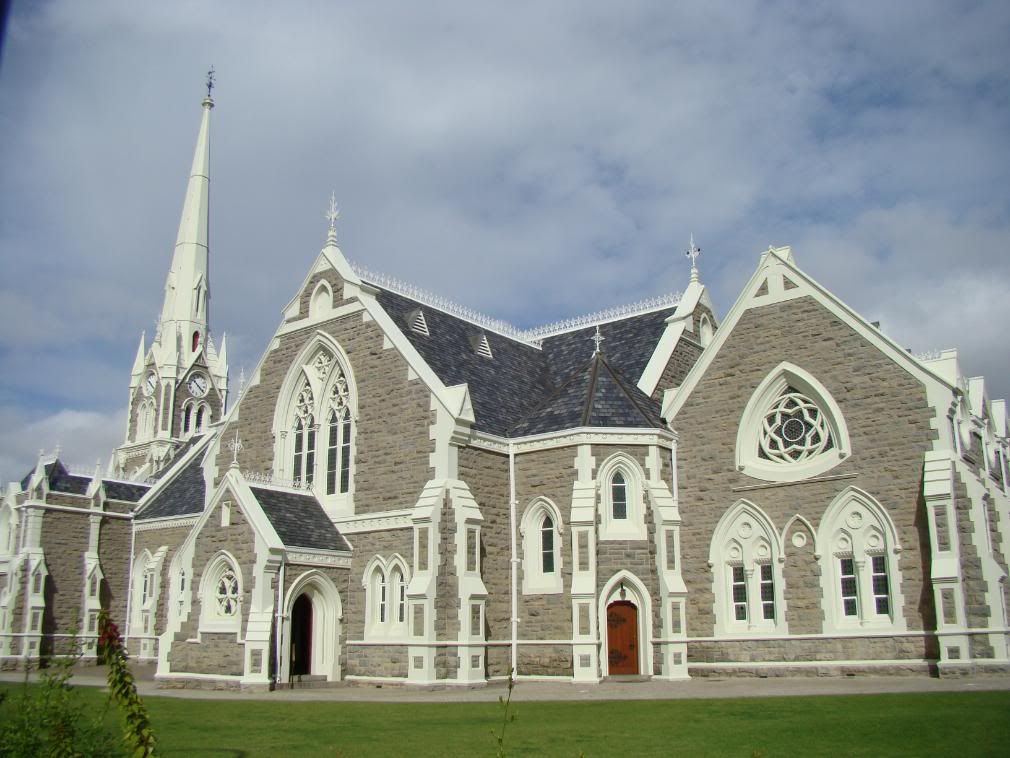
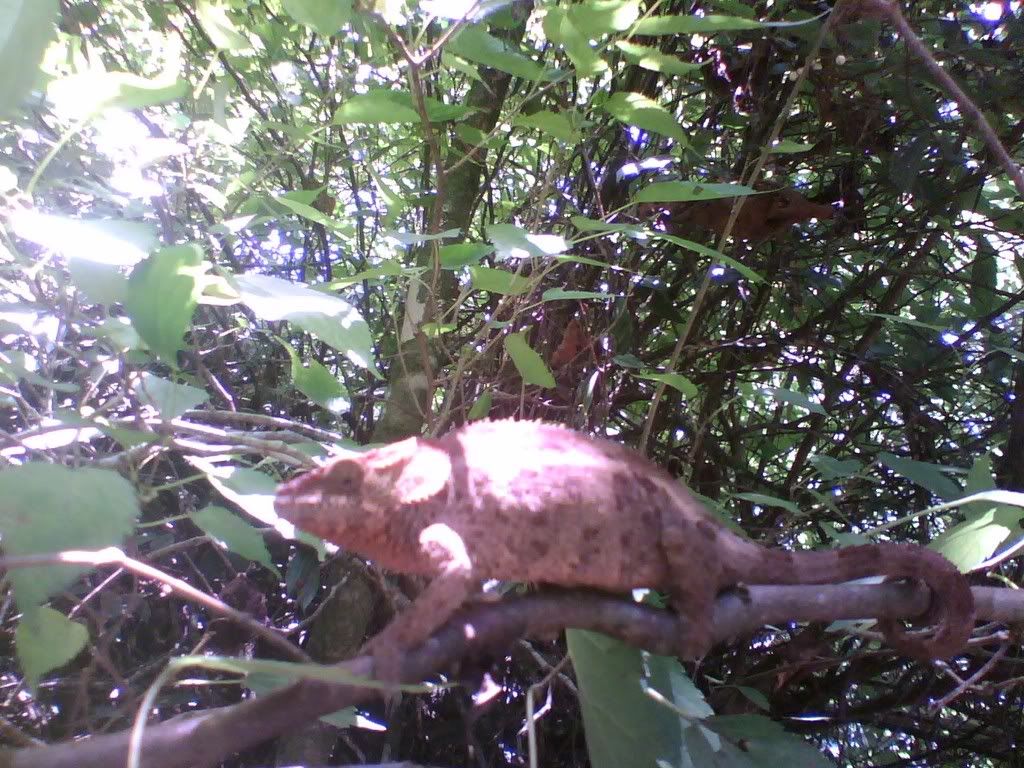 That evening Jose, who also works as a guide, took us on a night walk where we saw several species of chameleons and marveled at how they changed colors right before our eyes. Jose informed us that most of the time, they change colors not to camouflage but to communicate. As Jason was returning from the toilet, he had to stumble through the dark because the outdoor light had been mysteriously turned off. As we hung out in our room, we looked through our pictures and even thought about transferring them to the laptop but alas we didn’t…mistake number three. As we prepared for bed, Priti mentioned whether we should keep the windows closed but it was very hot and humid and the room had no fan, so Jason insisted we keep the windows open…mistake number four. Our final mistake was that we left some of our stuff near the open window, including Priti’s backpack and the laptop. Around three AM we heard some men outside of our room making a ruckus, and he even got out of bed to check our stuff and then closed the window after verifying the laptop was still there.
That evening Jose, who also works as a guide, took us on a night walk where we saw several species of chameleons and marveled at how they changed colors right before our eyes. Jose informed us that most of the time, they change colors not to camouflage but to communicate. As Jason was returning from the toilet, he had to stumble through the dark because the outdoor light had been mysteriously turned off. As we hung out in our room, we looked through our pictures and even thought about transferring them to the laptop but alas we didn’t…mistake number three. As we prepared for bed, Priti mentioned whether we should keep the windows closed but it was very hot and humid and the room had no fan, so Jason insisted we keep the windows open…mistake number four. Our final mistake was that we left some of our stuff near the open window, including Priti’s backpack and the laptop. Around three AM we heard some men outside of our room making a ruckus, and he even got out of bed to check our stuff and then closed the window after verifying the laptop was still there.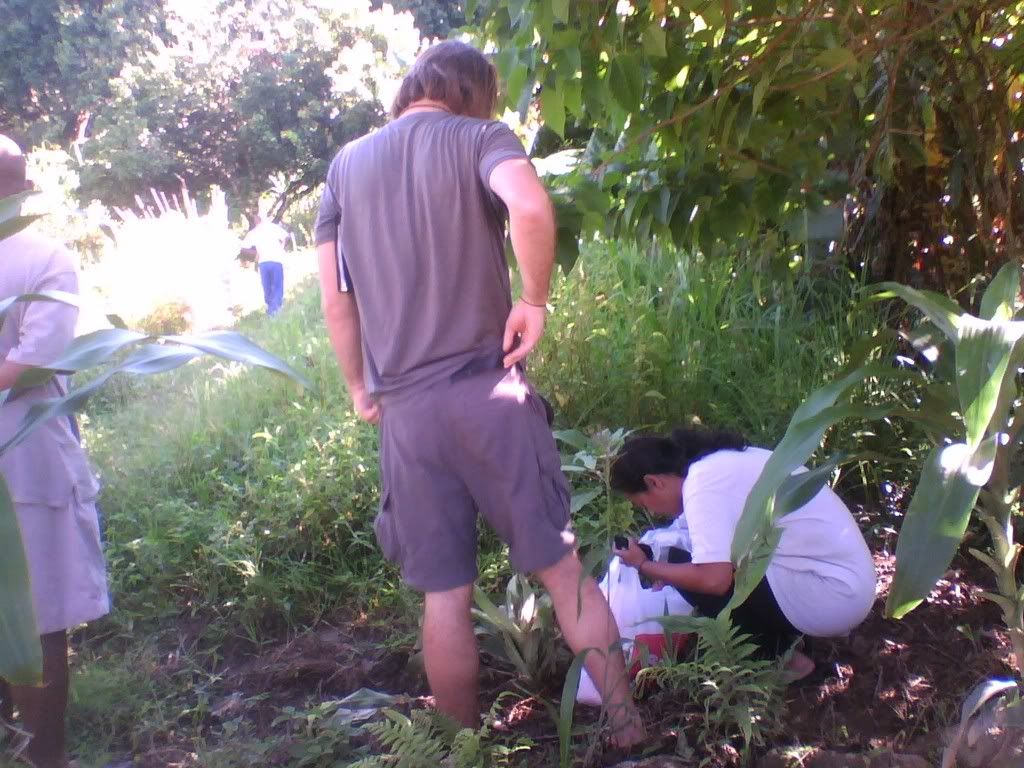 Also Priti’s money belt which contained all those dollars we had stocked up on…doh! We frantically looked around in hopes that it was some kind of bad dream but alas it was gone. Jose returned and inexplicably took some pictures of us freaking out. The thieves at least were considerate enough to dump her passport and credit card near the hotel; it would have been that much worse had we had to replace those too.
Also Priti’s money belt which contained all those dollars we had stocked up on…doh! We frantically looked around in hopes that it was some kind of bad dream but alas it was gone. Jose returned and inexplicably took some pictures of us freaking out. The thieves at least were considerate enough to dump her passport and credit card near the hotel; it would have been that much worse had we had to replace those too.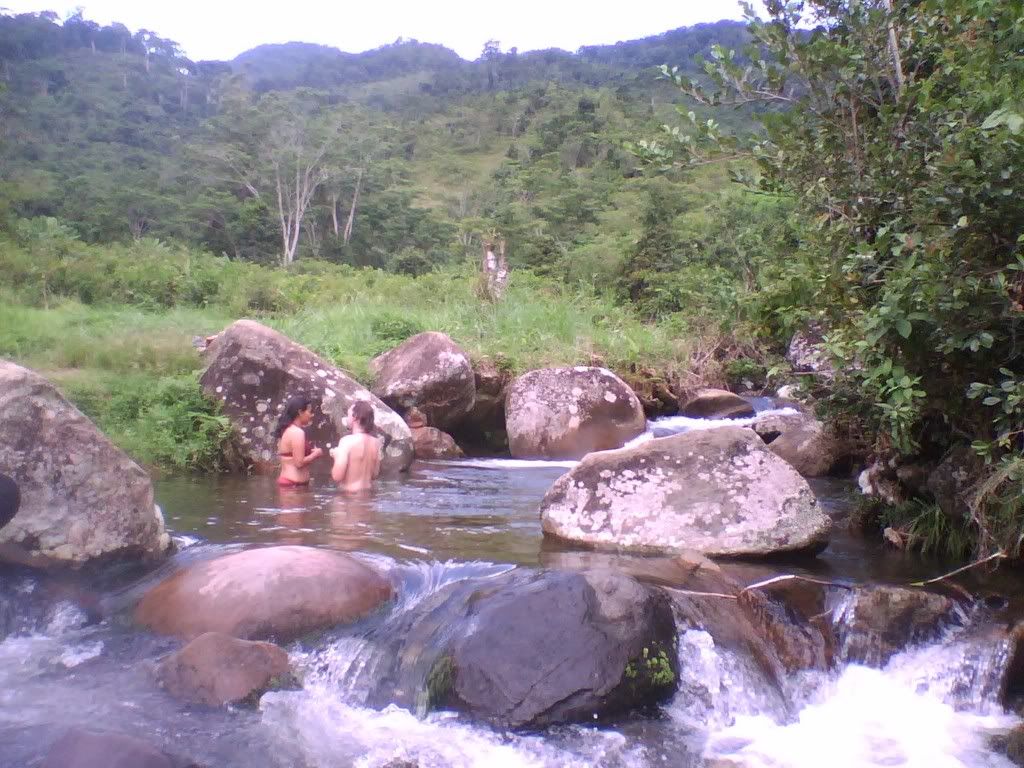 We contemplated just staying there until our departure three weeks hence, but couldn’t stomach the place anymore. At the internet place, we decided to buy a cell phone because it was pretty cheap. We found out later that even this schmuck ripped us off as all of the introductory credits had been used up. During our ordeal, Jose was very nice and we were thankful for his support.
We contemplated just staying there until our departure three weeks hence, but couldn’t stomach the place anymore. At the internet place, we decided to buy a cell phone because it was pretty cheap. We found out later that even this schmuck ripped us off as all of the introductory credits had been used up. During our ordeal, Jose was very nice and we were thankful for his support. On the tour we saw some amazing scenery and went on a hike (guided of course) to see groups of ring-tailed lemurs, which were pretty entertaining. The pictures posted were actually from South Africa (ZA), so in retrospect we had absolutely no reason to even be in Madagascar, considering it was our most expensive flight and we could’ve just seen lemurs in ZA…oh well. The final part of our day trip was to a local winery and we were amazed at how awful the wine was…basically cough syrup. We stared in amazement as a group of French tourists bought several bottles, and we concluded they must have been drunk.
On the tour we saw some amazing scenery and went on a hike (guided of course) to see groups of ring-tailed lemurs, which were pretty entertaining. The pictures posted were actually from South Africa (ZA), so in retrospect we had absolutely no reason to even be in Madagascar, considering it was our most expensive flight and we could’ve just seen lemurs in ZA…oh well. The final part of our day trip was to a local winery and we were amazed at how awful the wine was…basically cough syrup. We stared in amazement as a group of French tourists bought several bottles, and we concluded they must have been drunk. Disgusted, Jason refused to pay for him and the owner took the guy’s ID card as collateral until he returned to settle his bill. And it turns out there was no concert that day, but the following week. We both returned to the Chinese restaurant a couple days later for some tasty fried noodles and zebu (beef), and recounted the experience with the owner. He informed us he had no intention of keeping the guy’s ID, but simply wanted him to own up to his mistake first. Not much else happened, although we went out to one of the local clubs and enjoyed some of the local music. The one thing the Malagasys do have is good music, and Jason even purchased a couple CDs by one of the local artists, ‘Firmin.’
Disgusted, Jason refused to pay for him and the owner took the guy’s ID card as collateral until he returned to settle his bill. And it turns out there was no concert that day, but the following week. We both returned to the Chinese restaurant a couple days later for some tasty fried noodles and zebu (beef), and recounted the experience with the owner. He informed us he had no intention of keeping the guy’s ID, but simply wanted him to own up to his mistake first. Not much else happened, although we went out to one of the local clubs and enjoyed some of the local music. The one thing the Malagasys do have is good music, and Jason even purchased a couple CDs by one of the local artists, ‘Firmin.’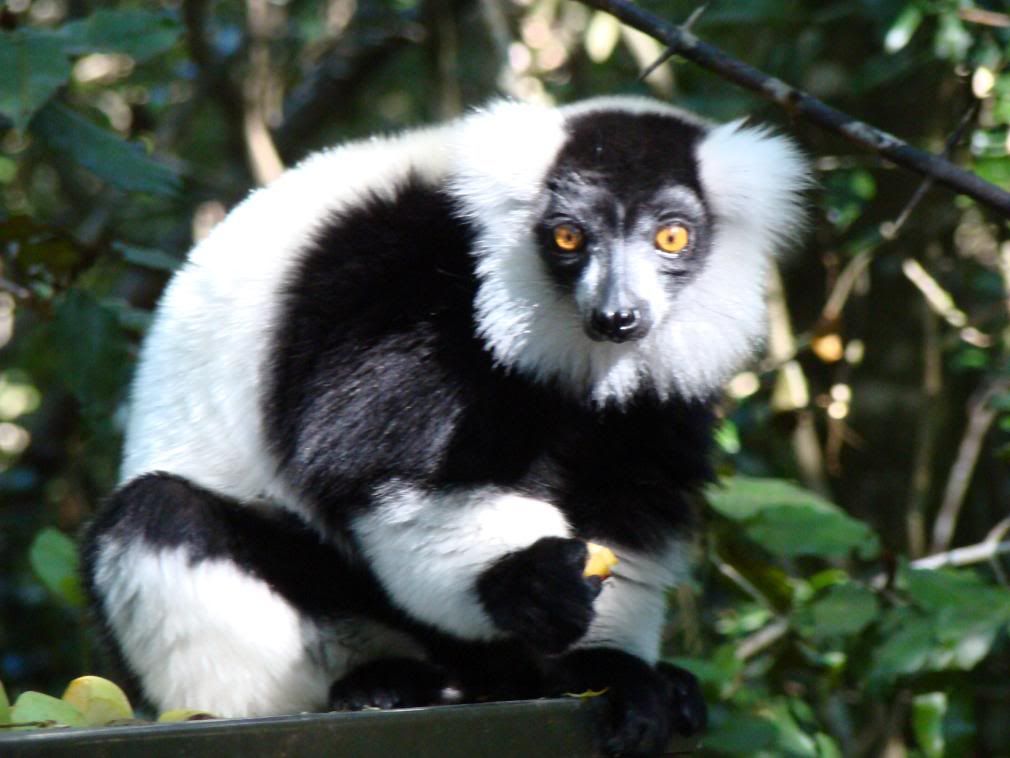 Bizarrely, their currency is double-valued, meaning that each note is printed with two values on it. With the ariary worth five times as much as the franc (e.g., a 1000 ariary note also has 5000 francs printed on it), we speculated it was just another way to rip off tourists. We purchased a couple stamps and came to the realization that even the post office in Ranomafana had tried to rip us off. Save for Jose, pretty much everyone we met tried to screw us in one way or another. As Woody Allen once said, “comedy equals tragedy plus time.” But, writing about it two months after the fact, we still fail to see the humor in this particular instance. Up until the robbery, we had been pretty careful, but unfortunately one bout of carelessness is all it takes. Our guards were on high alert as our next destination was South Africa, one of the most notorious countries for tourists being victimized.
Bizarrely, their currency is double-valued, meaning that each note is printed with two values on it. With the ariary worth five times as much as the franc (e.g., a 1000 ariary note also has 5000 francs printed on it), we speculated it was just another way to rip off tourists. We purchased a couple stamps and came to the realization that even the post office in Ranomafana had tried to rip us off. Save for Jose, pretty much everyone we met tried to screw us in one way or another. As Woody Allen once said, “comedy equals tragedy plus time.” But, writing about it two months after the fact, we still fail to see the humor in this particular instance. Up until the robbery, we had been pretty careful, but unfortunately one bout of carelessness is all it takes. Our guards were on high alert as our next destination was South Africa, one of the most notorious countries for tourists being victimized.
